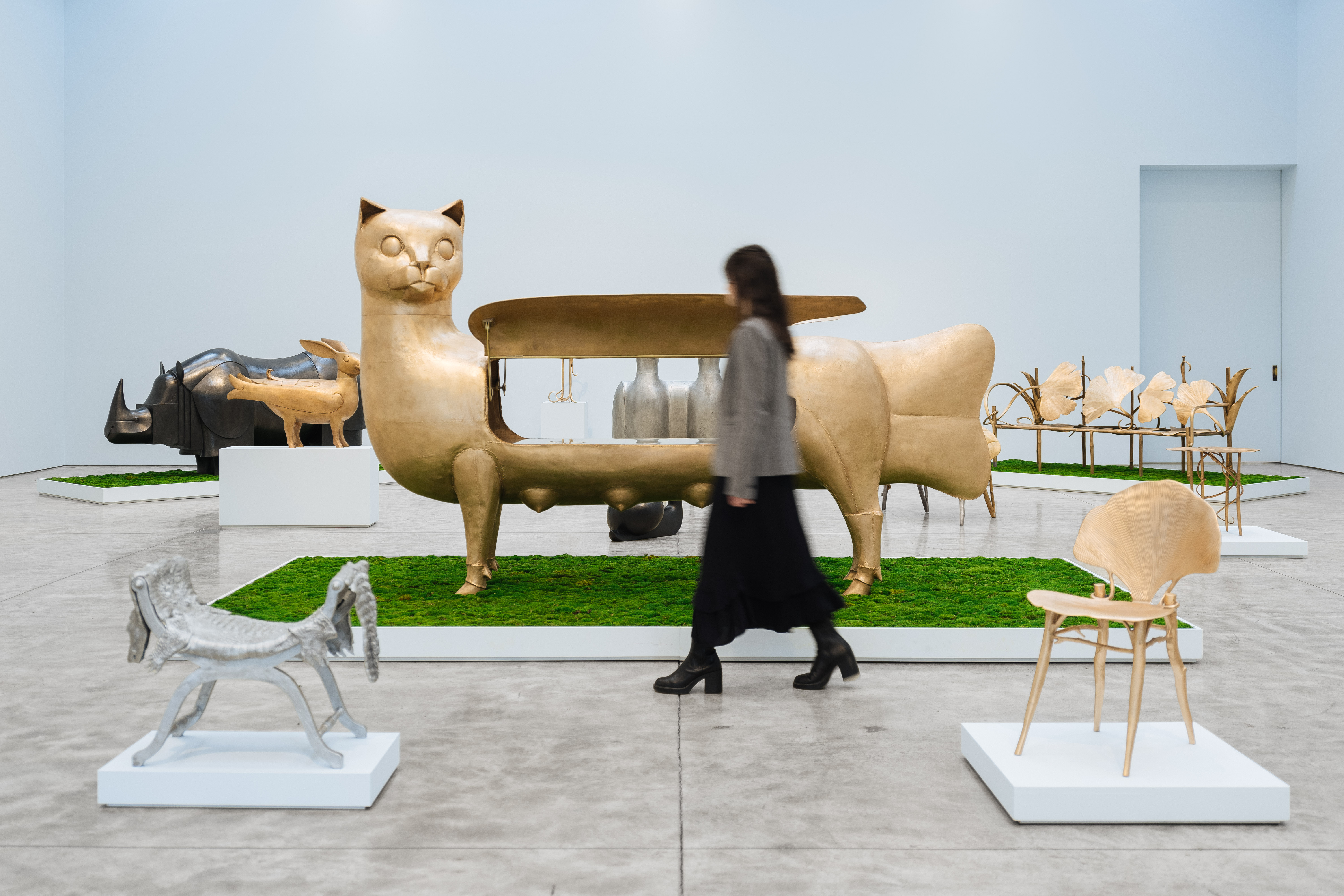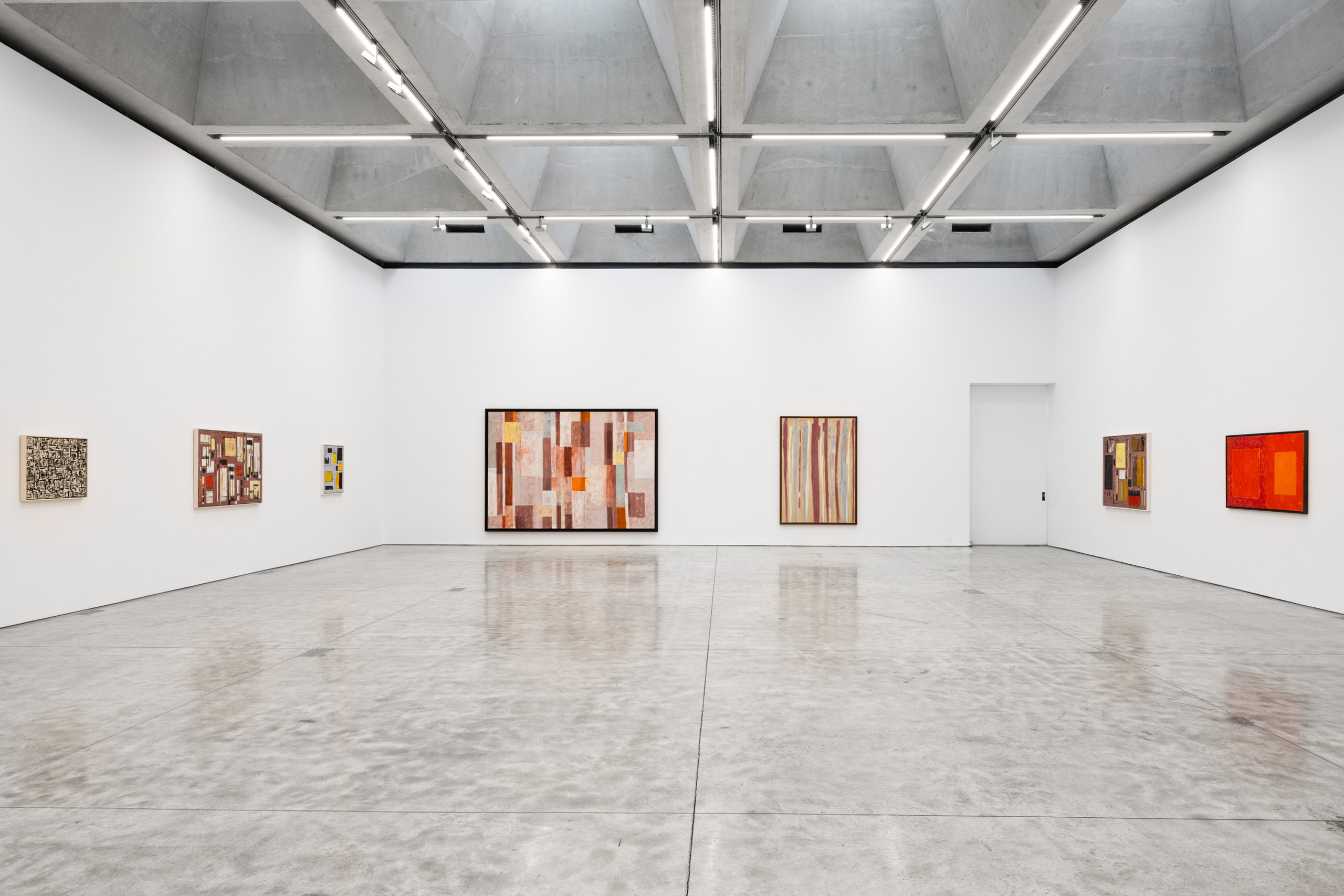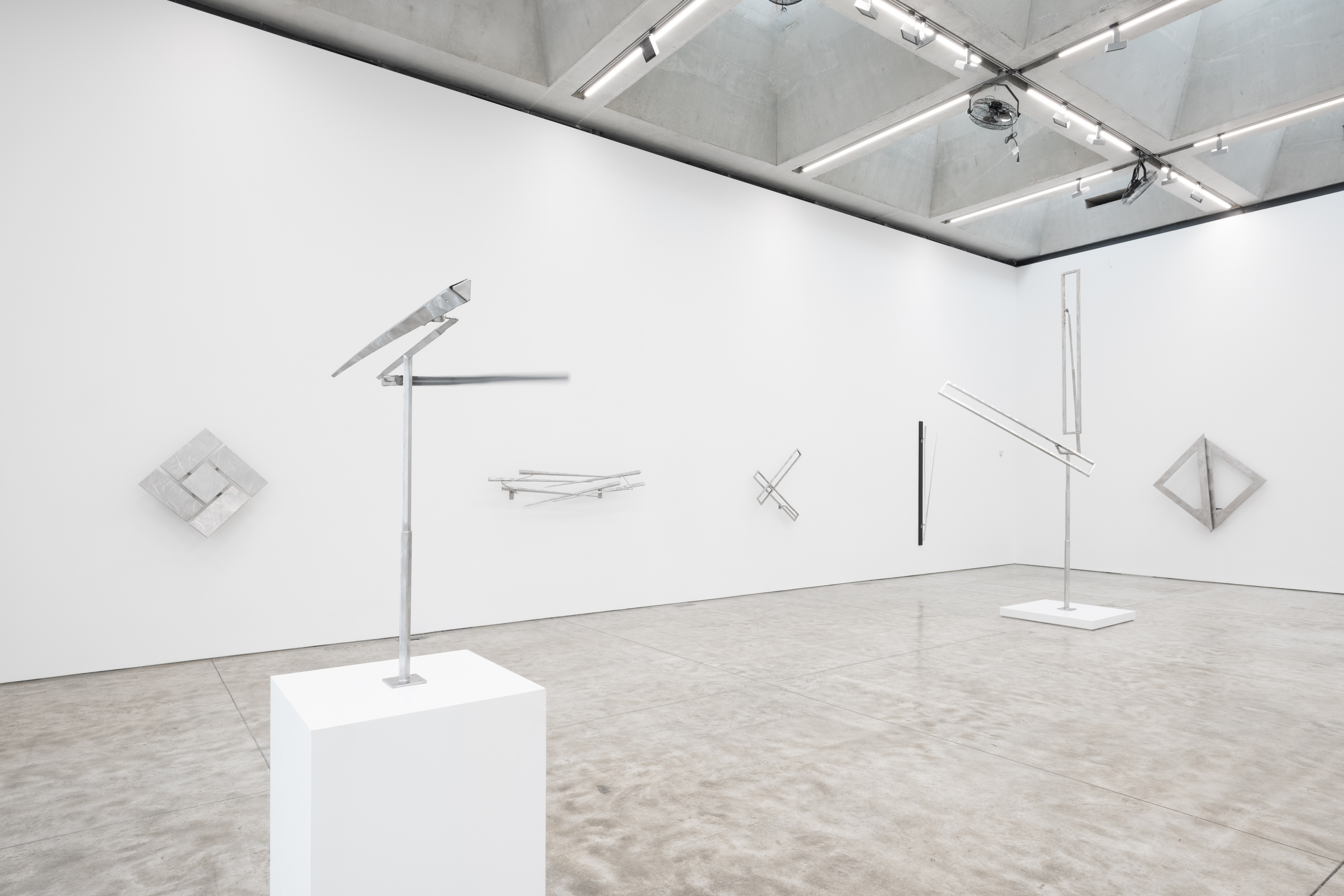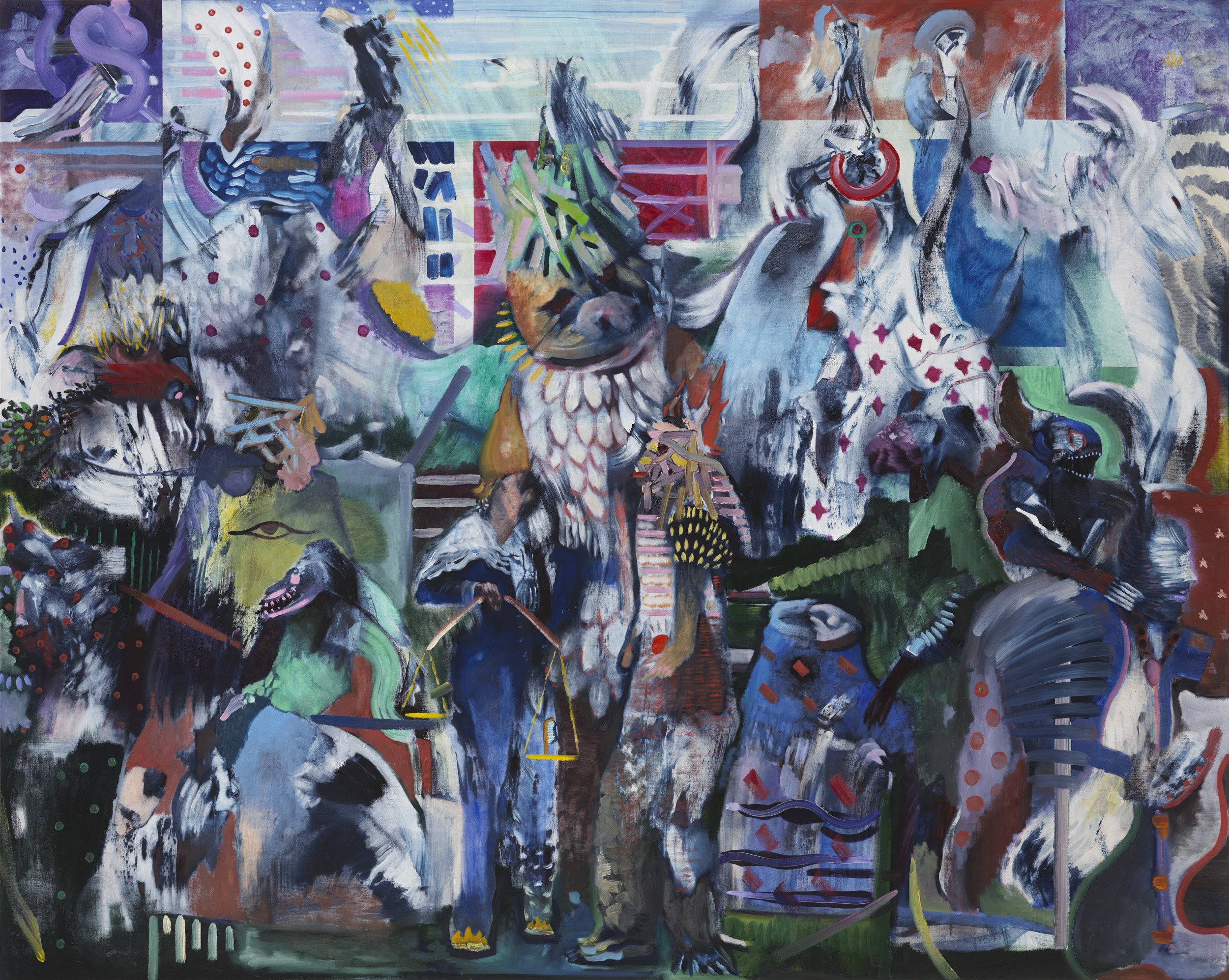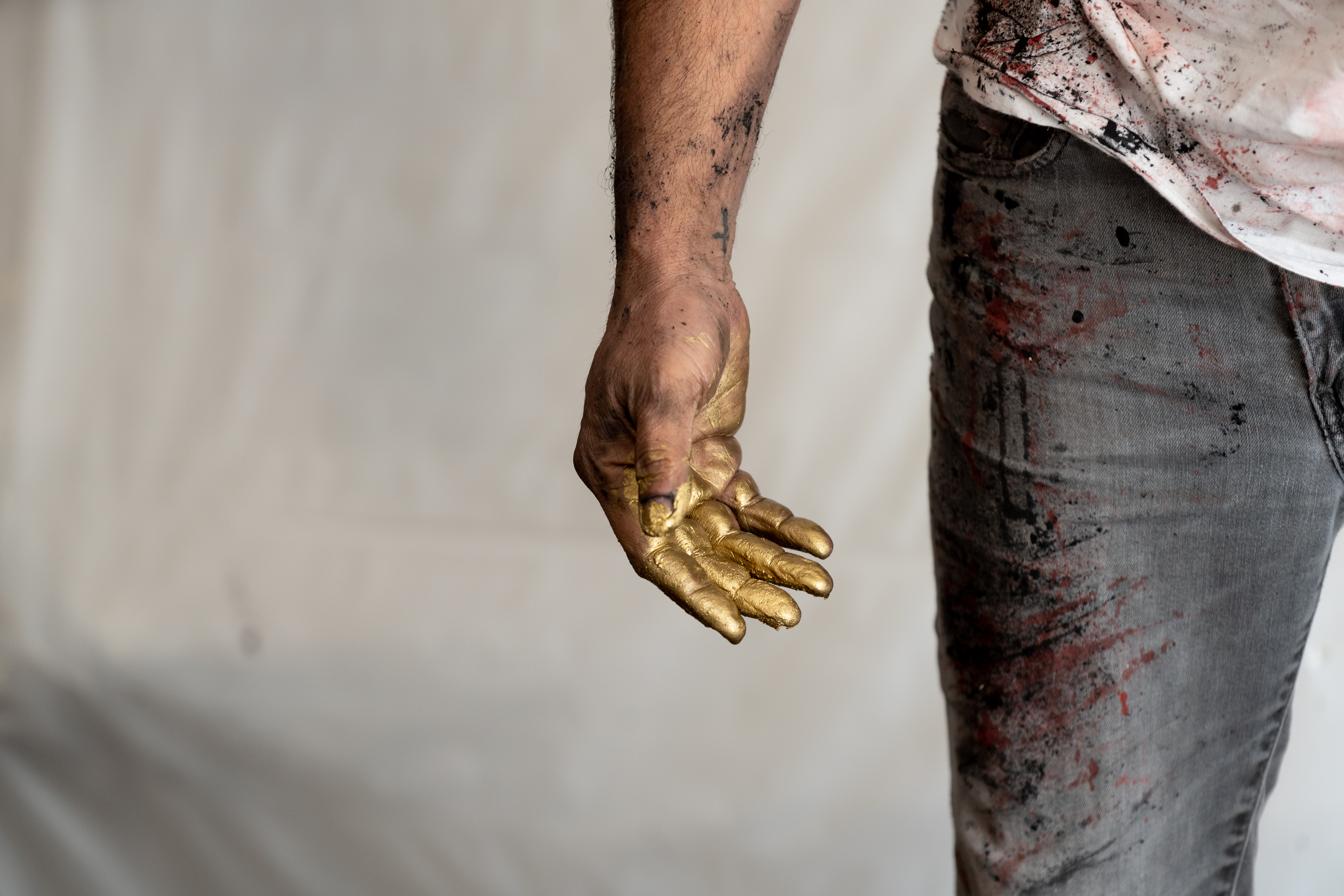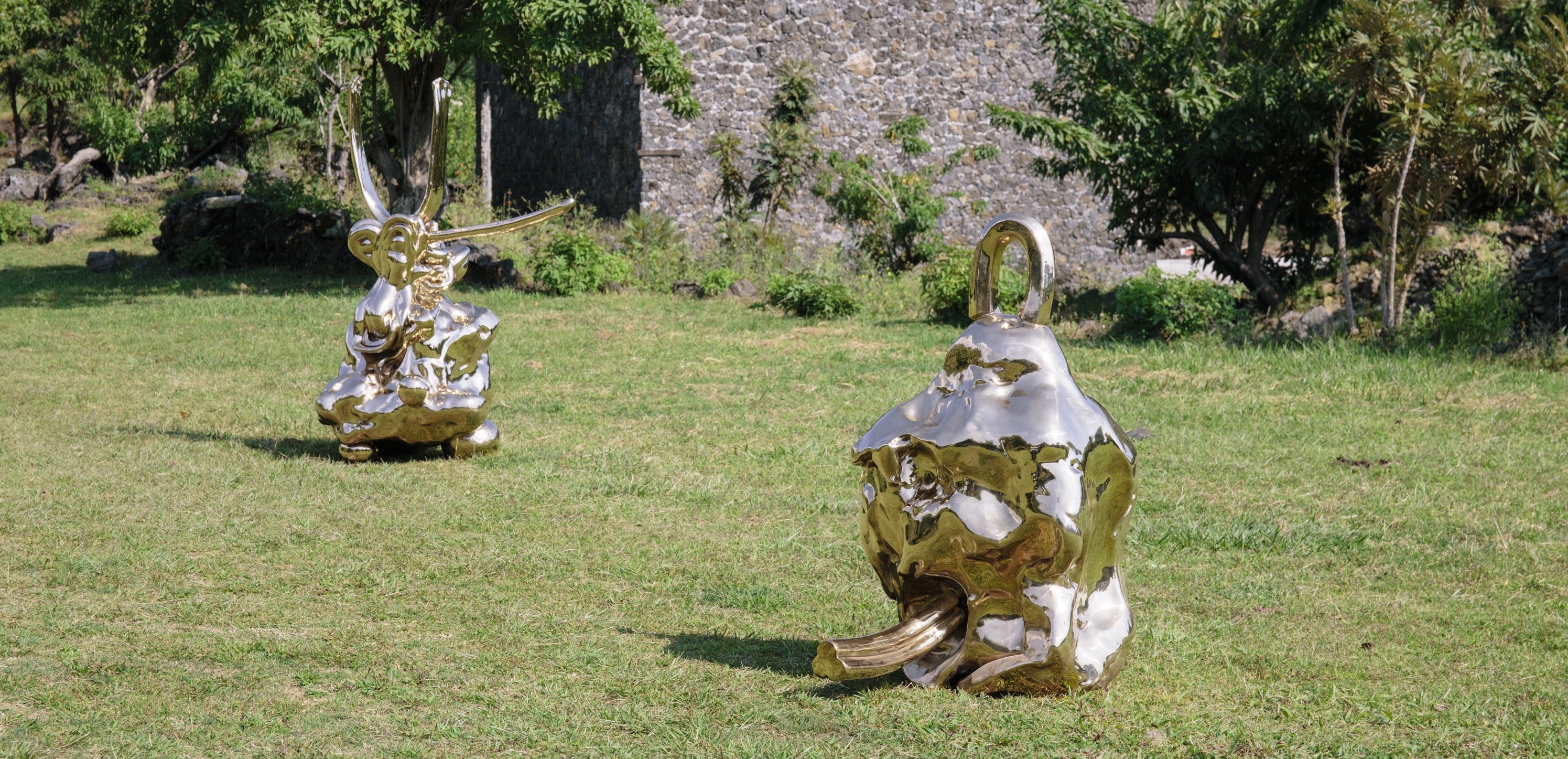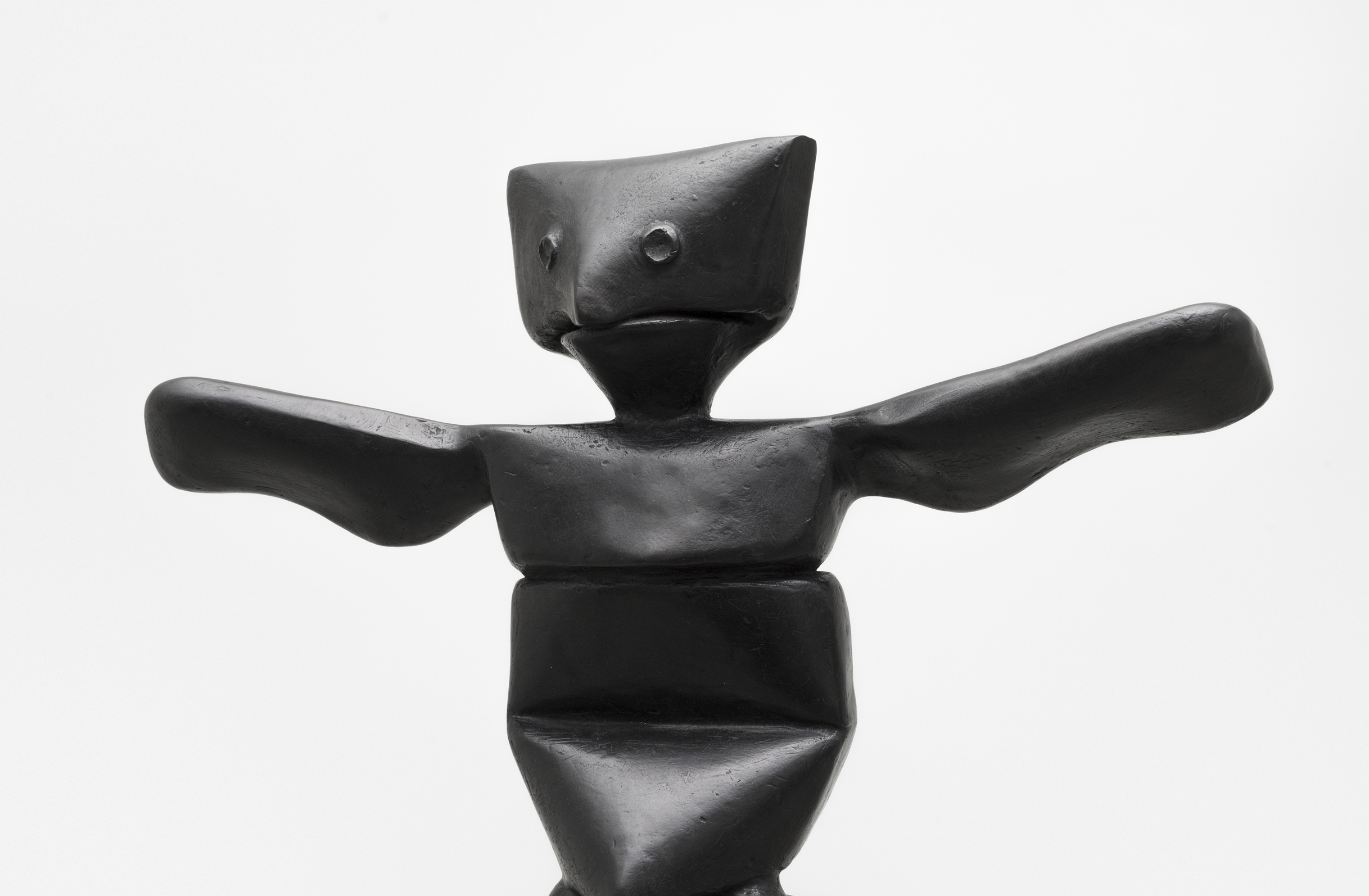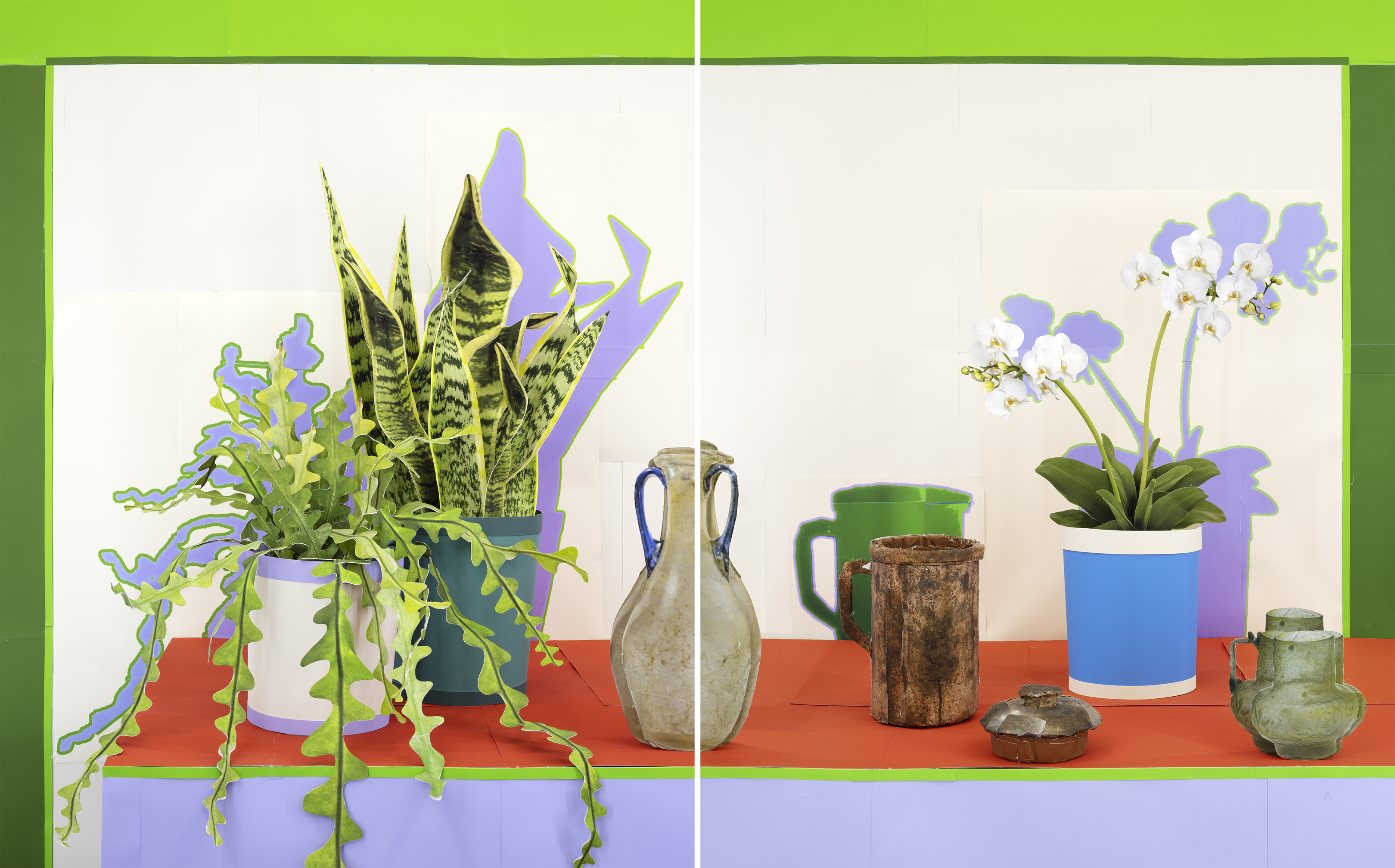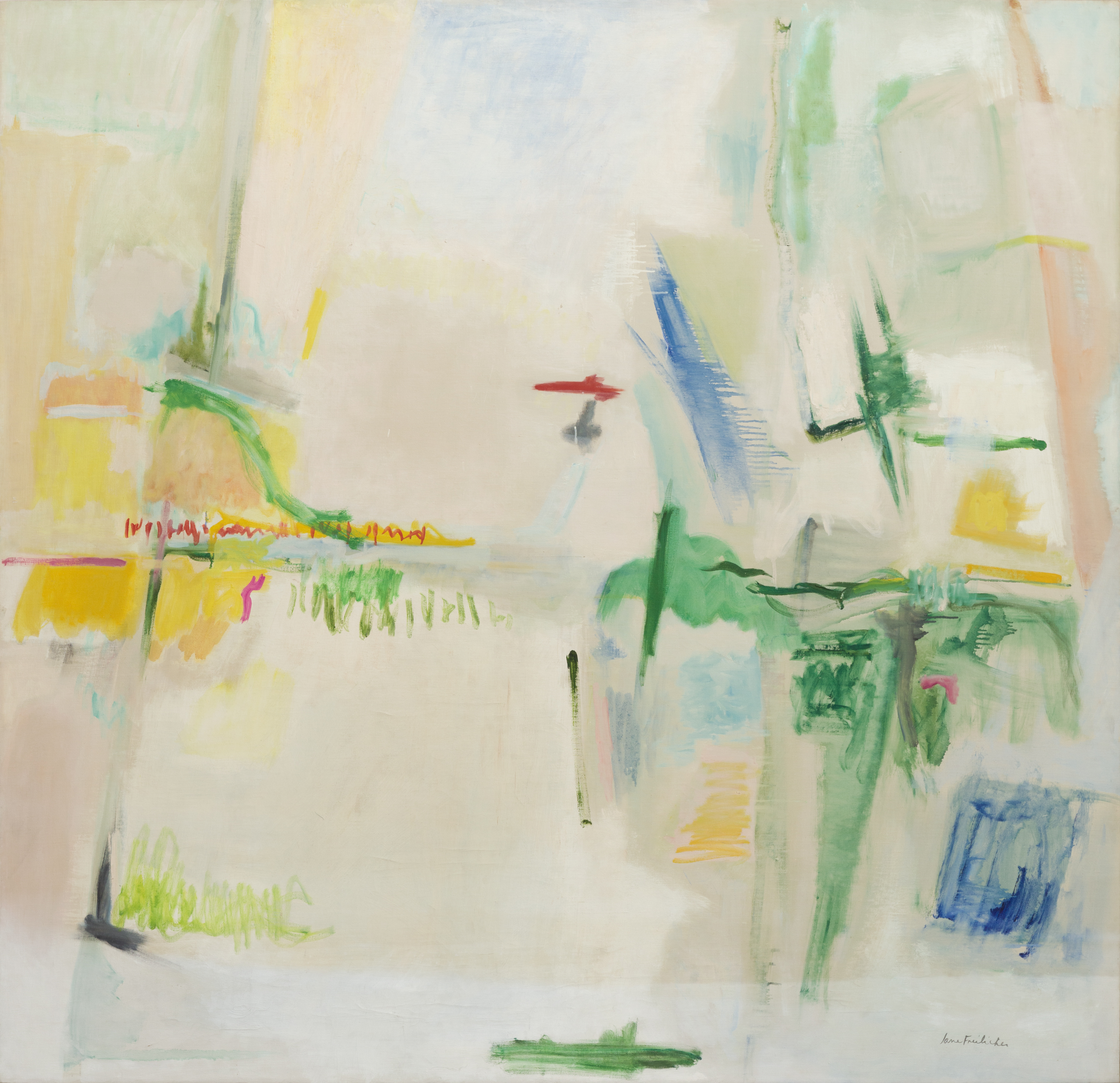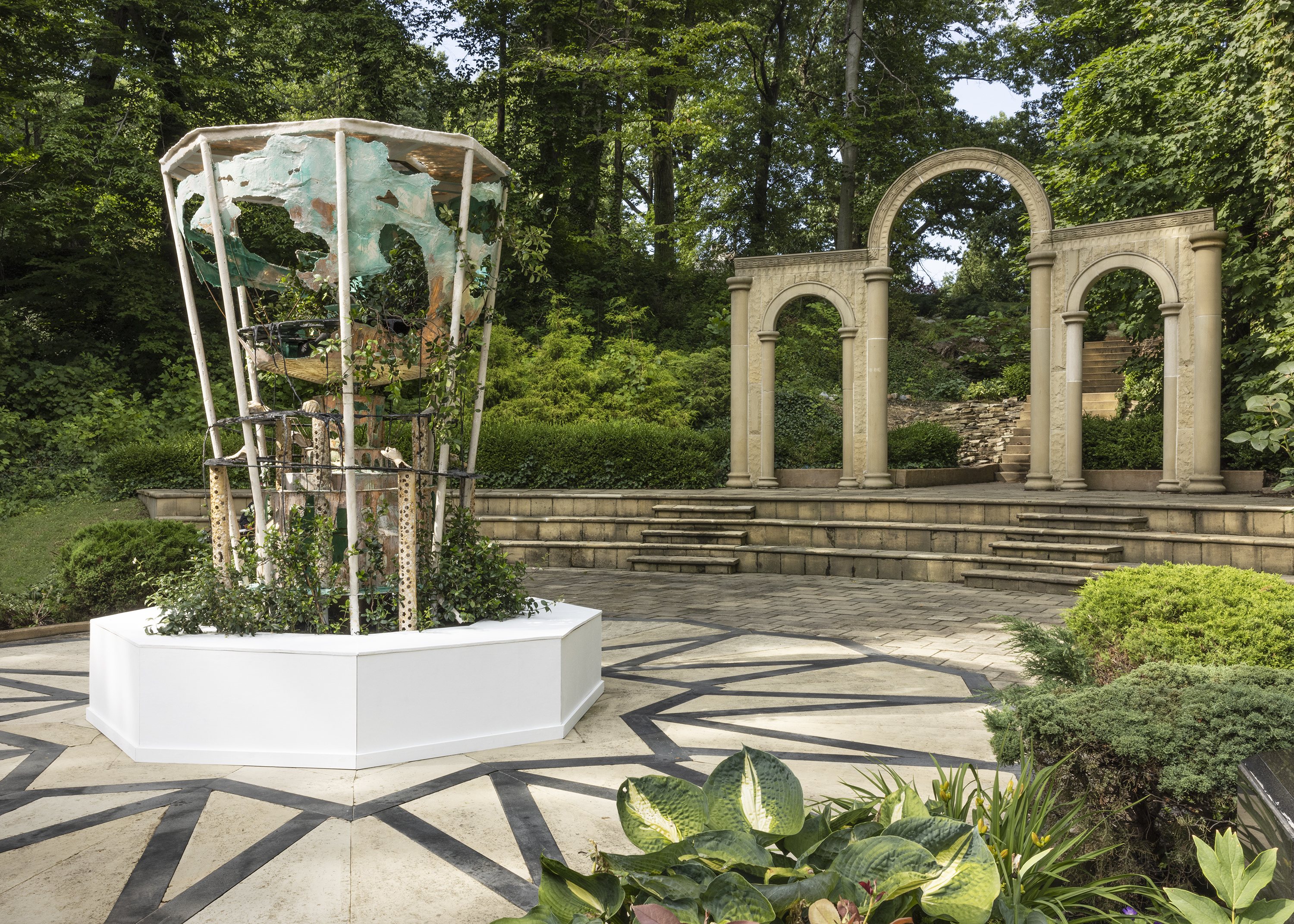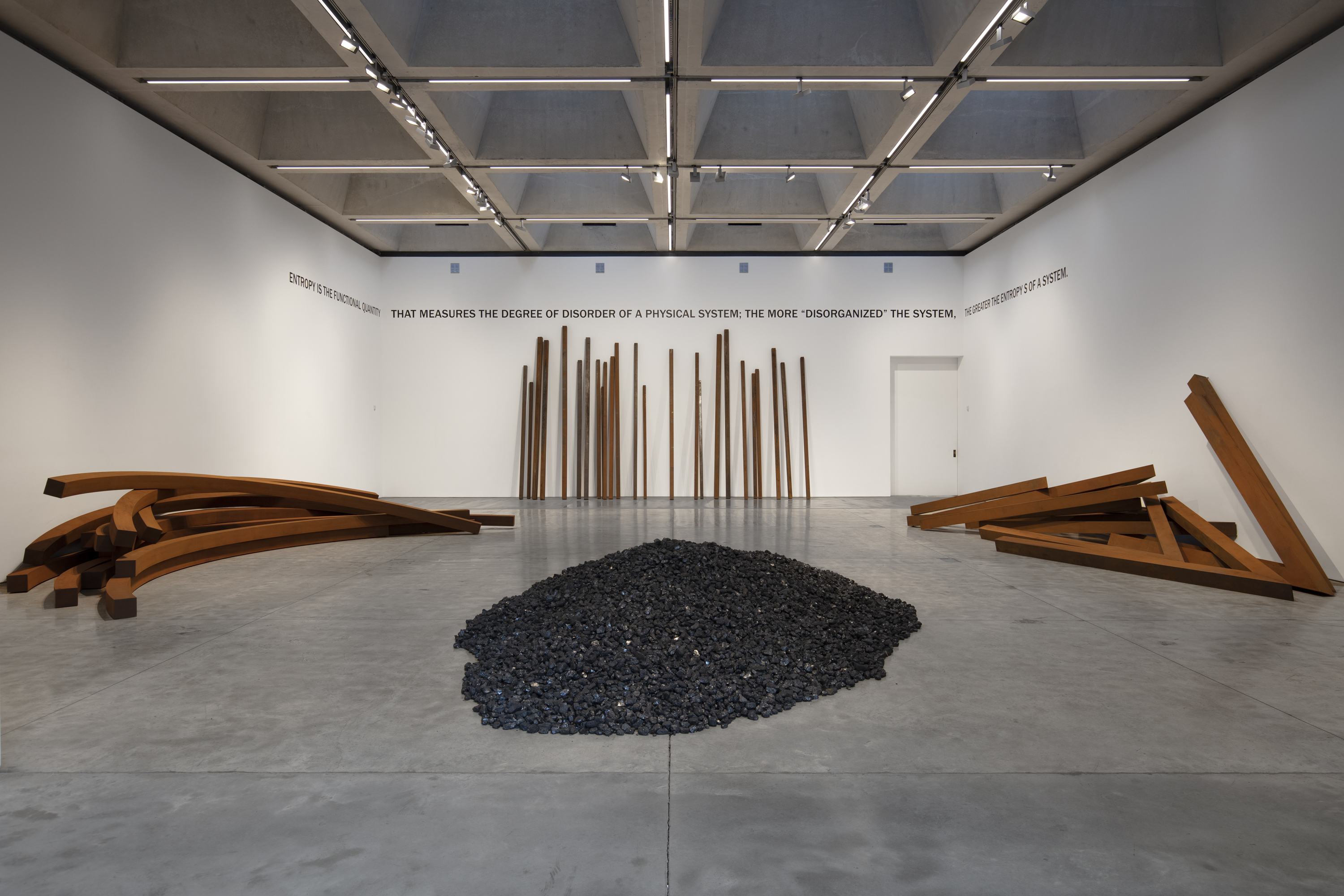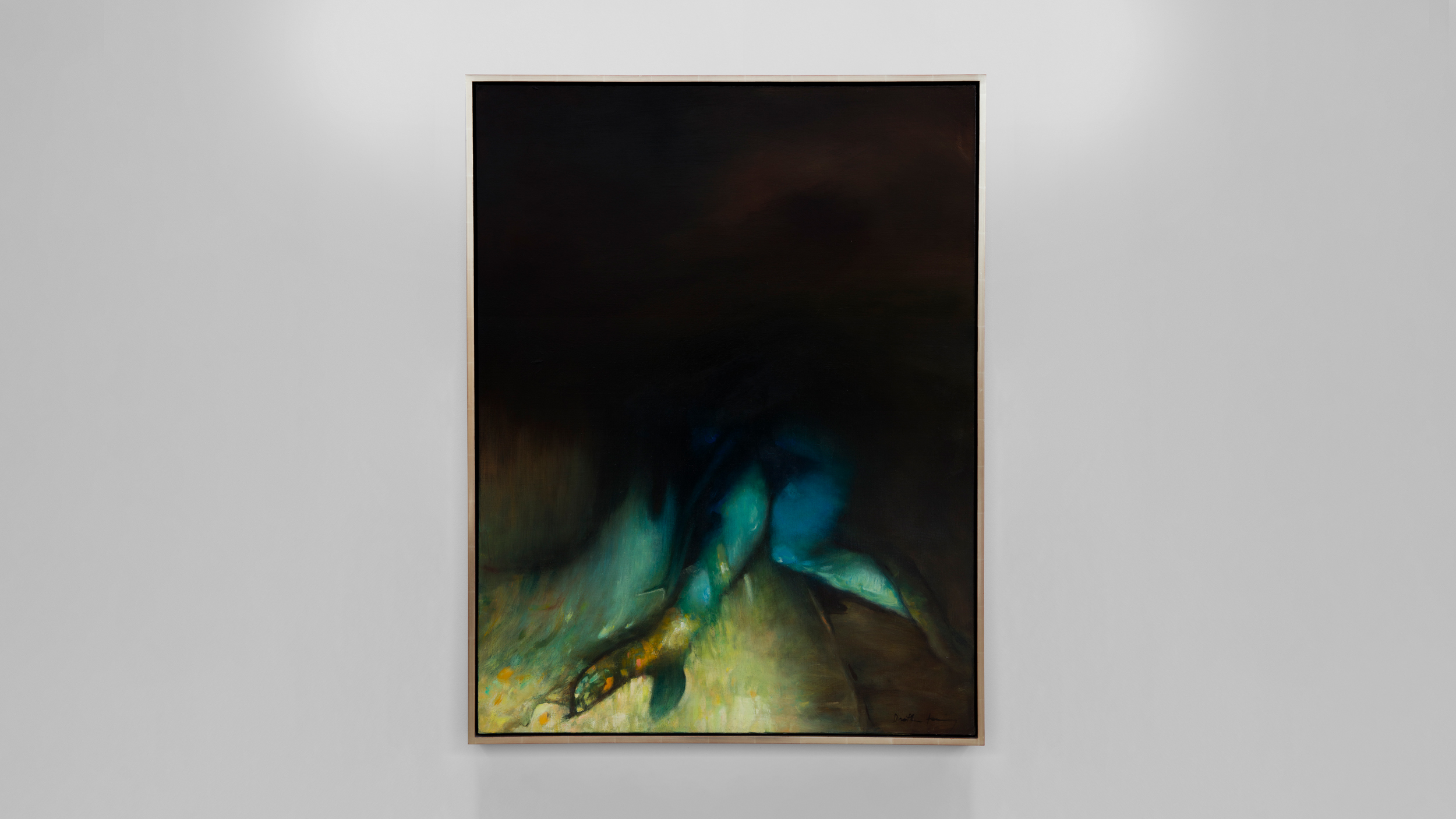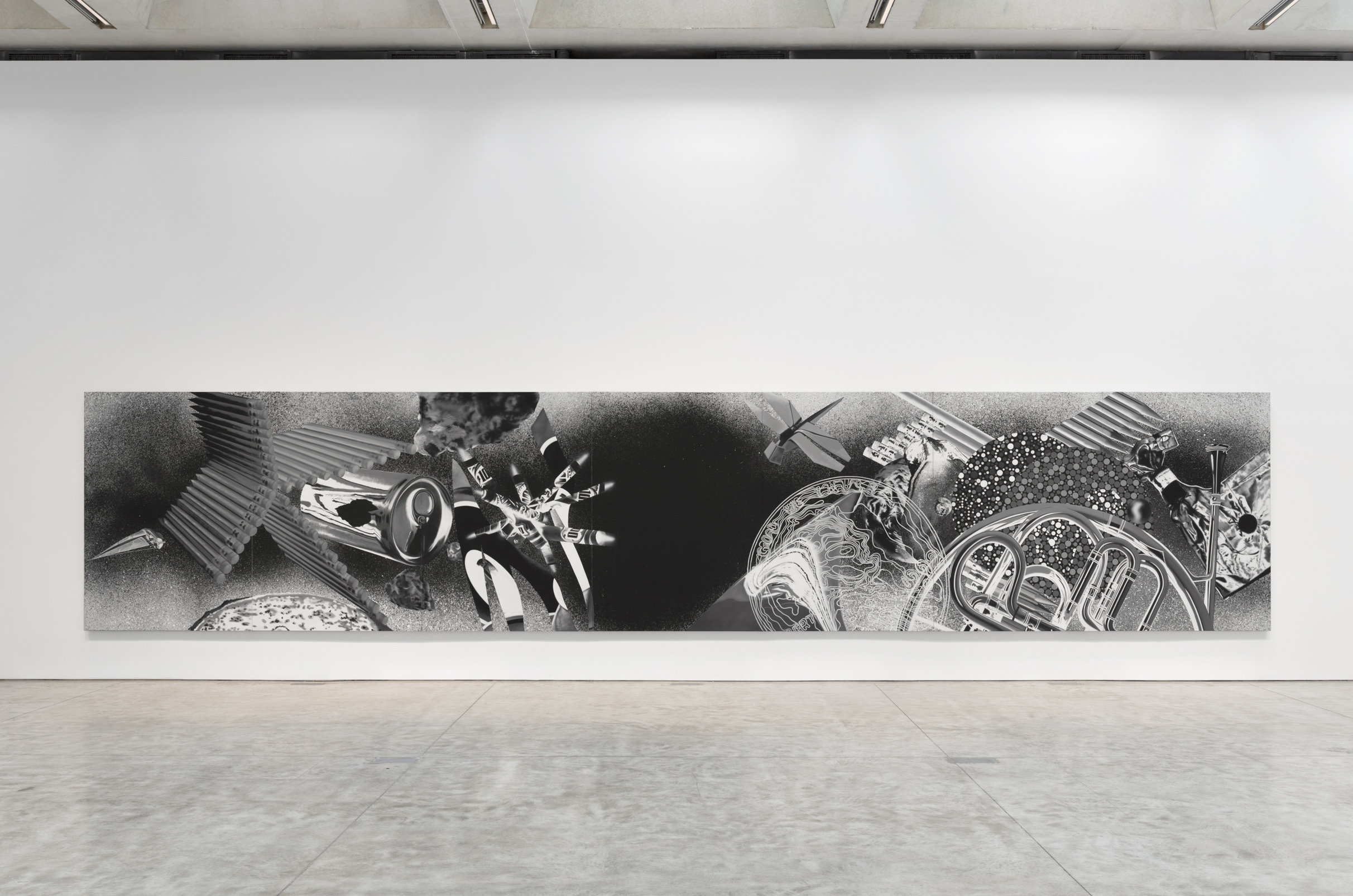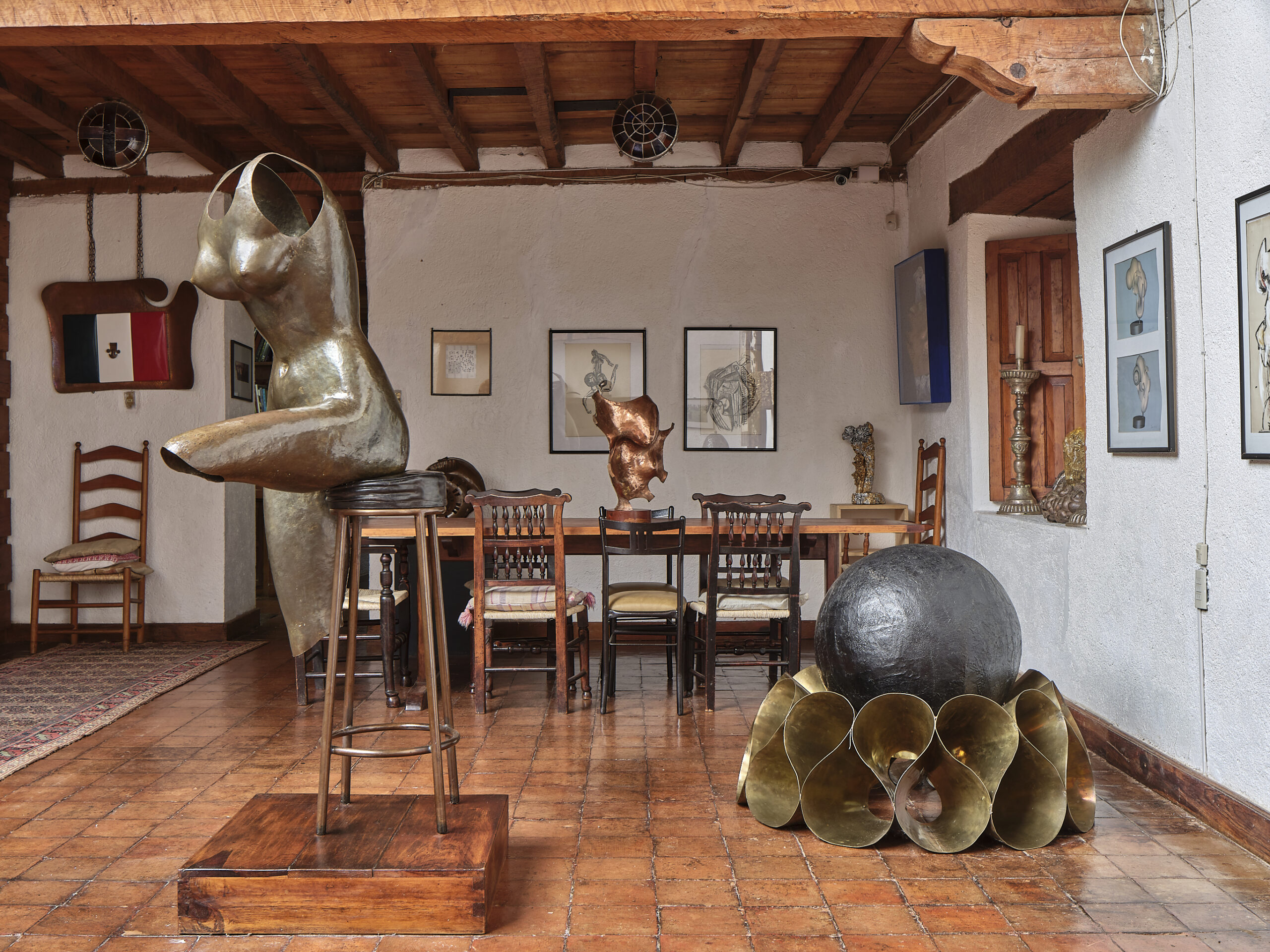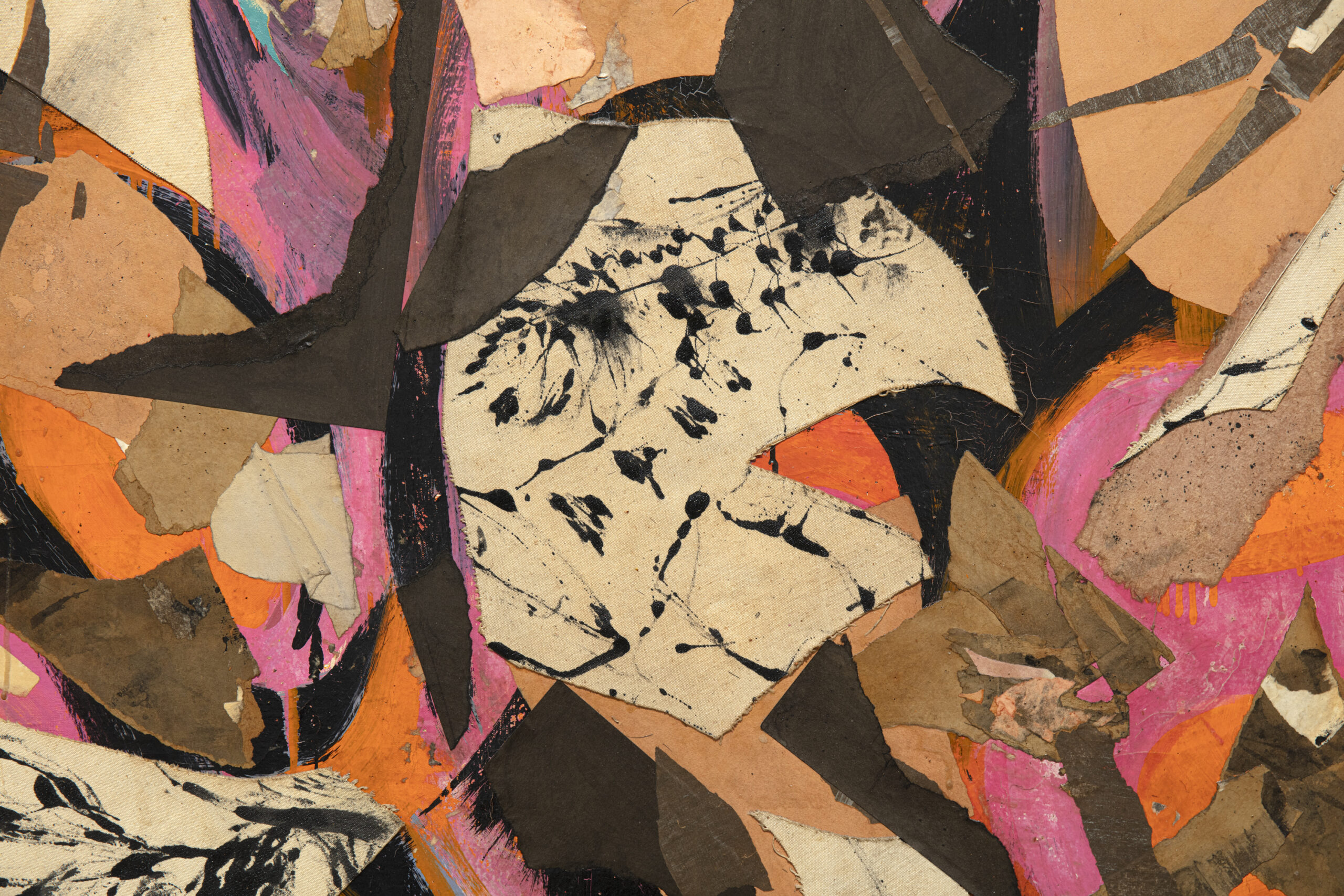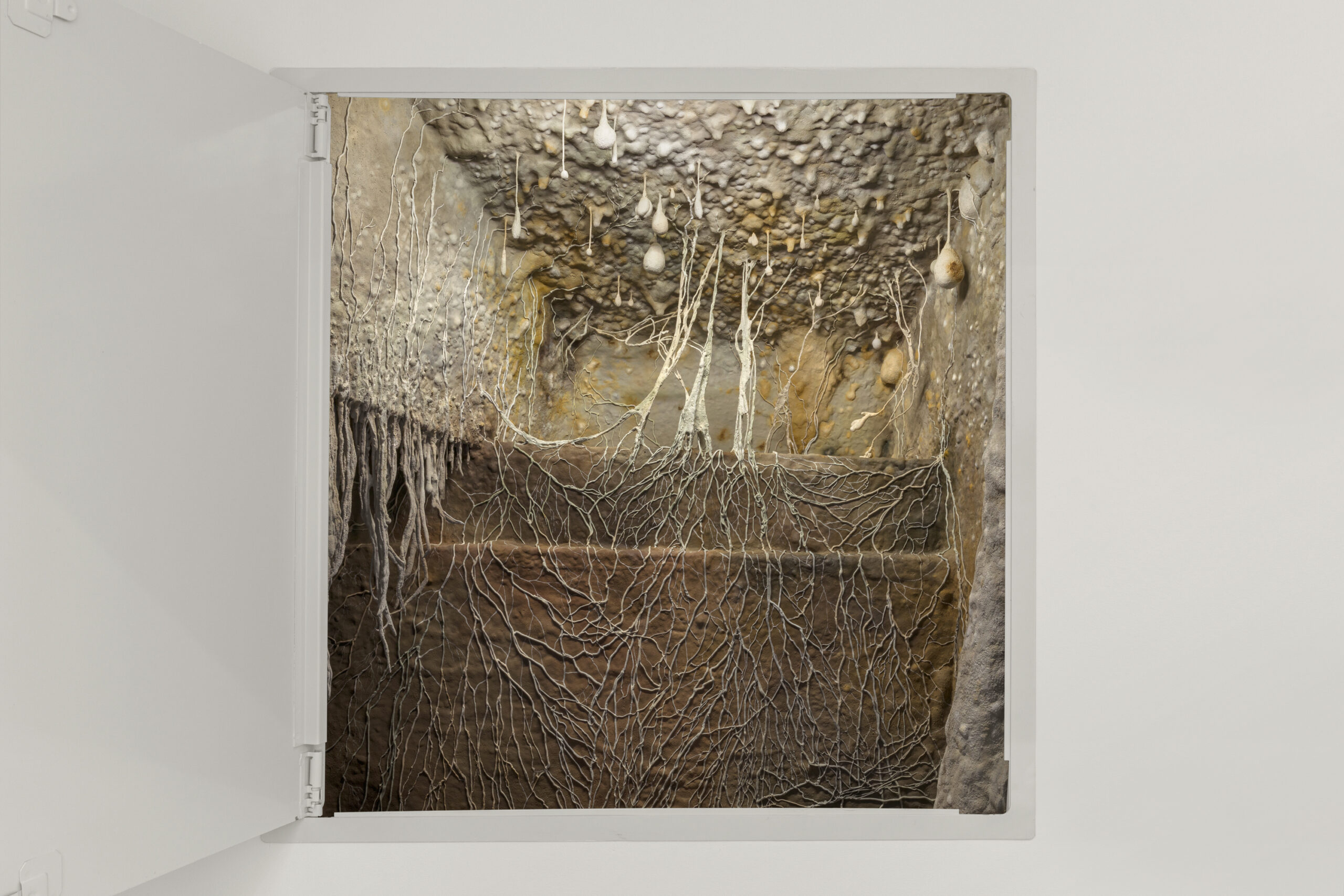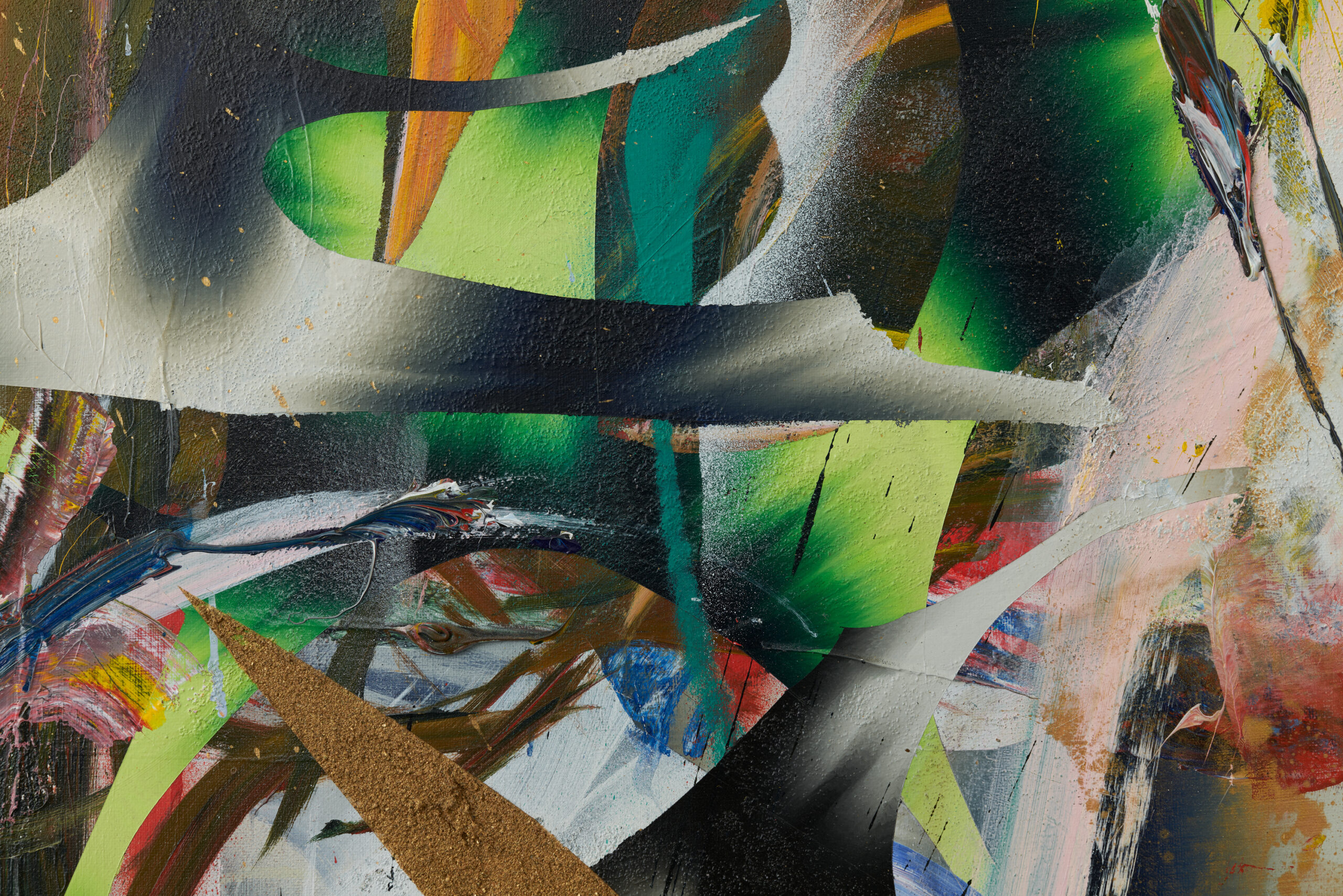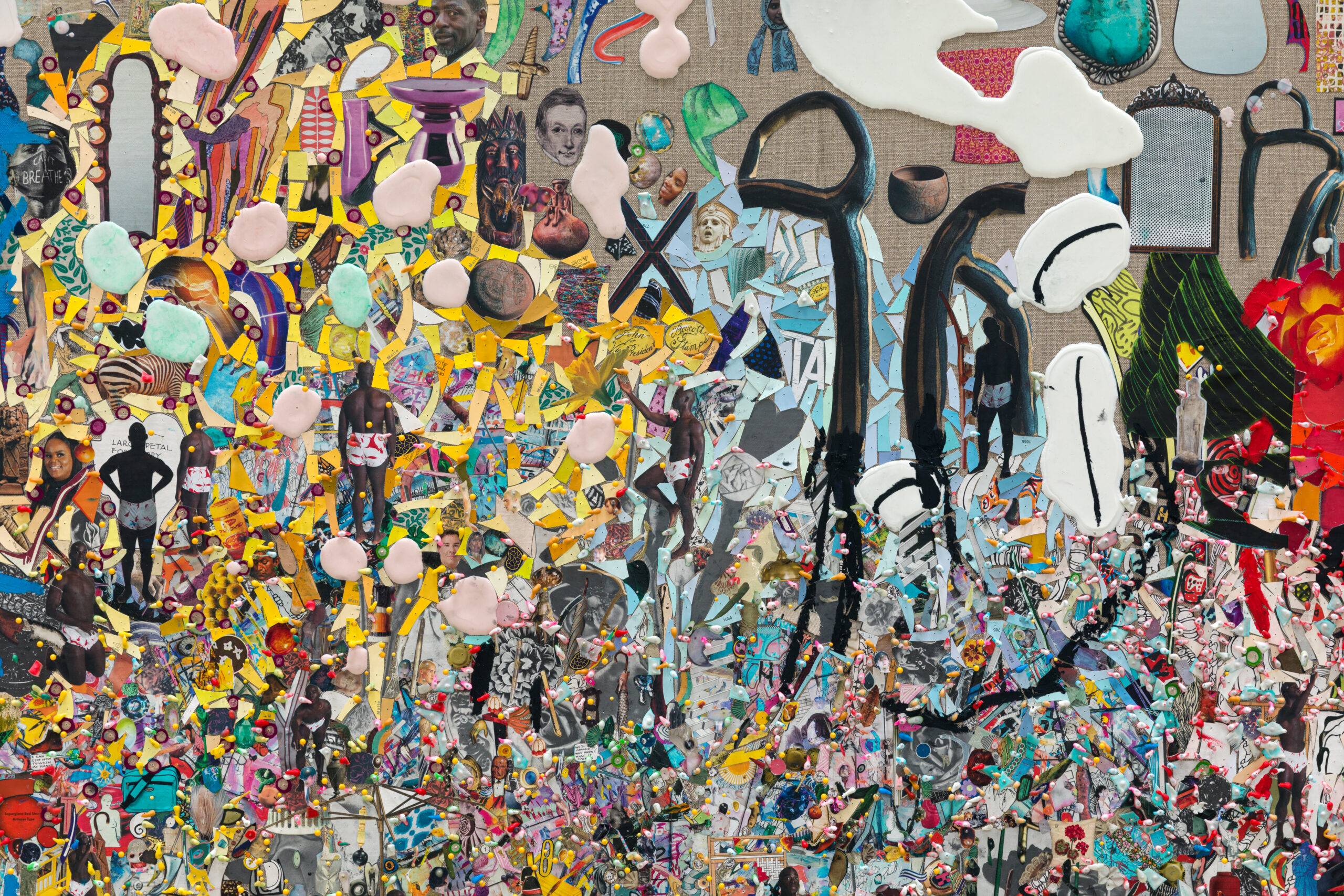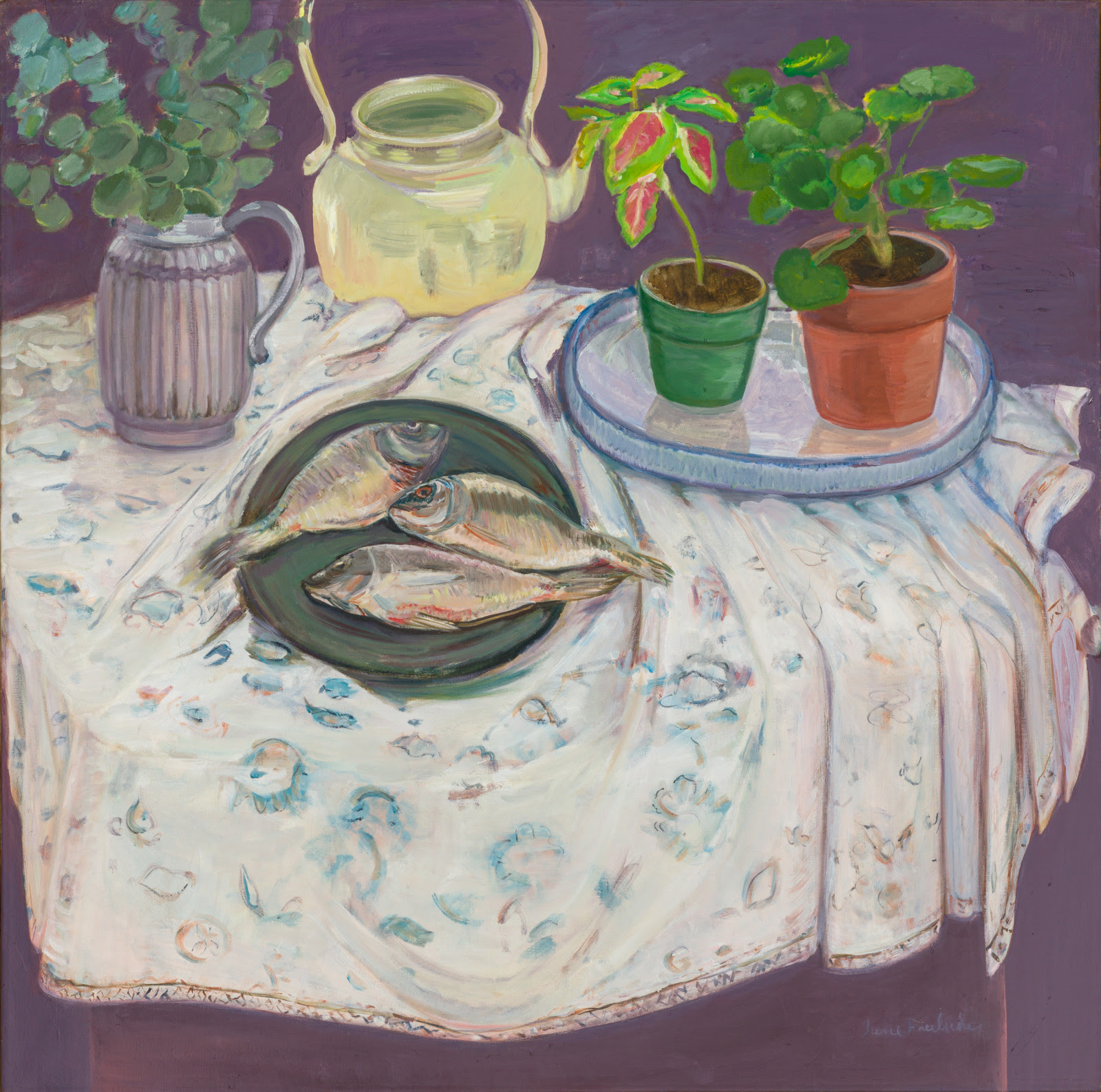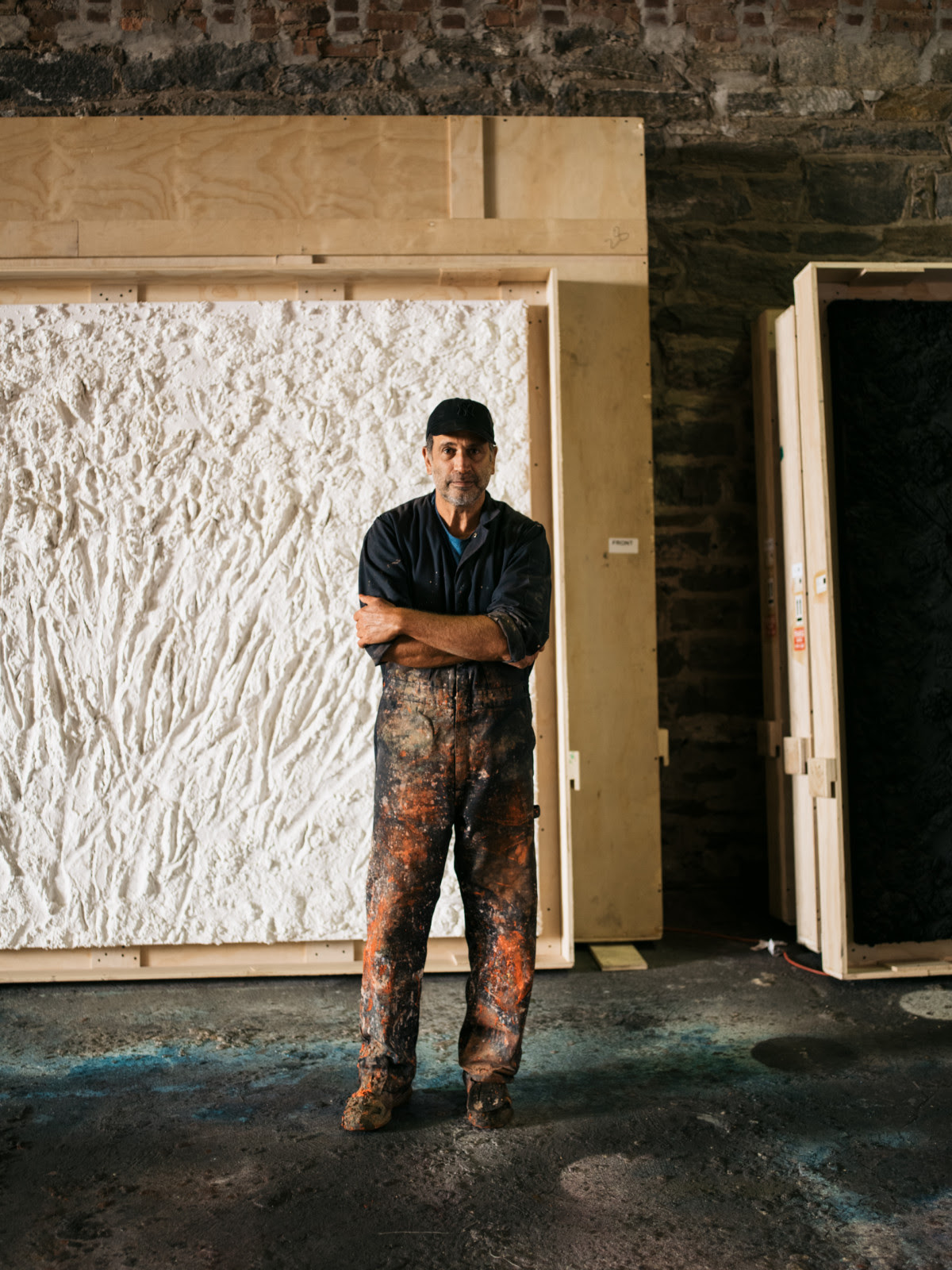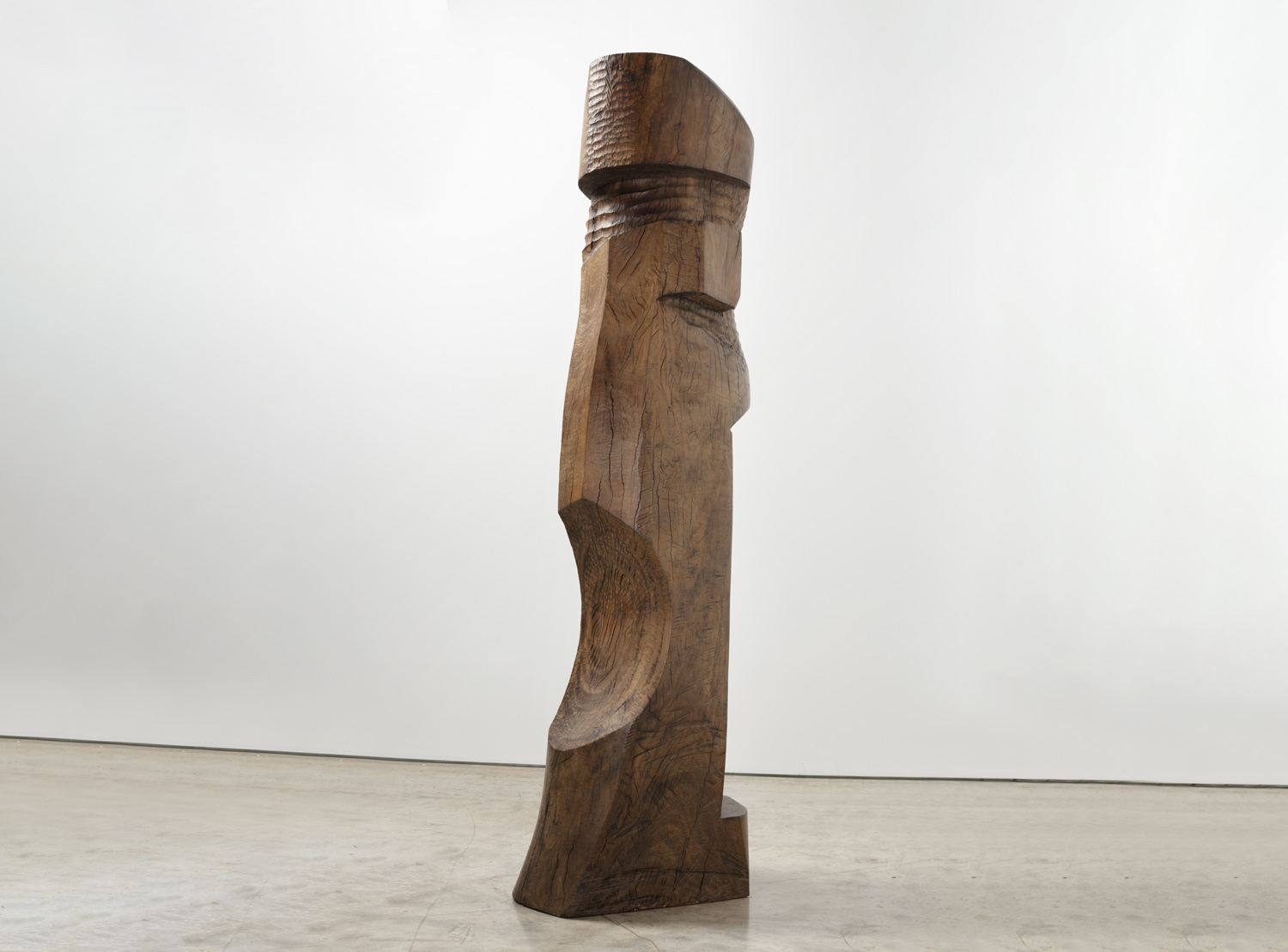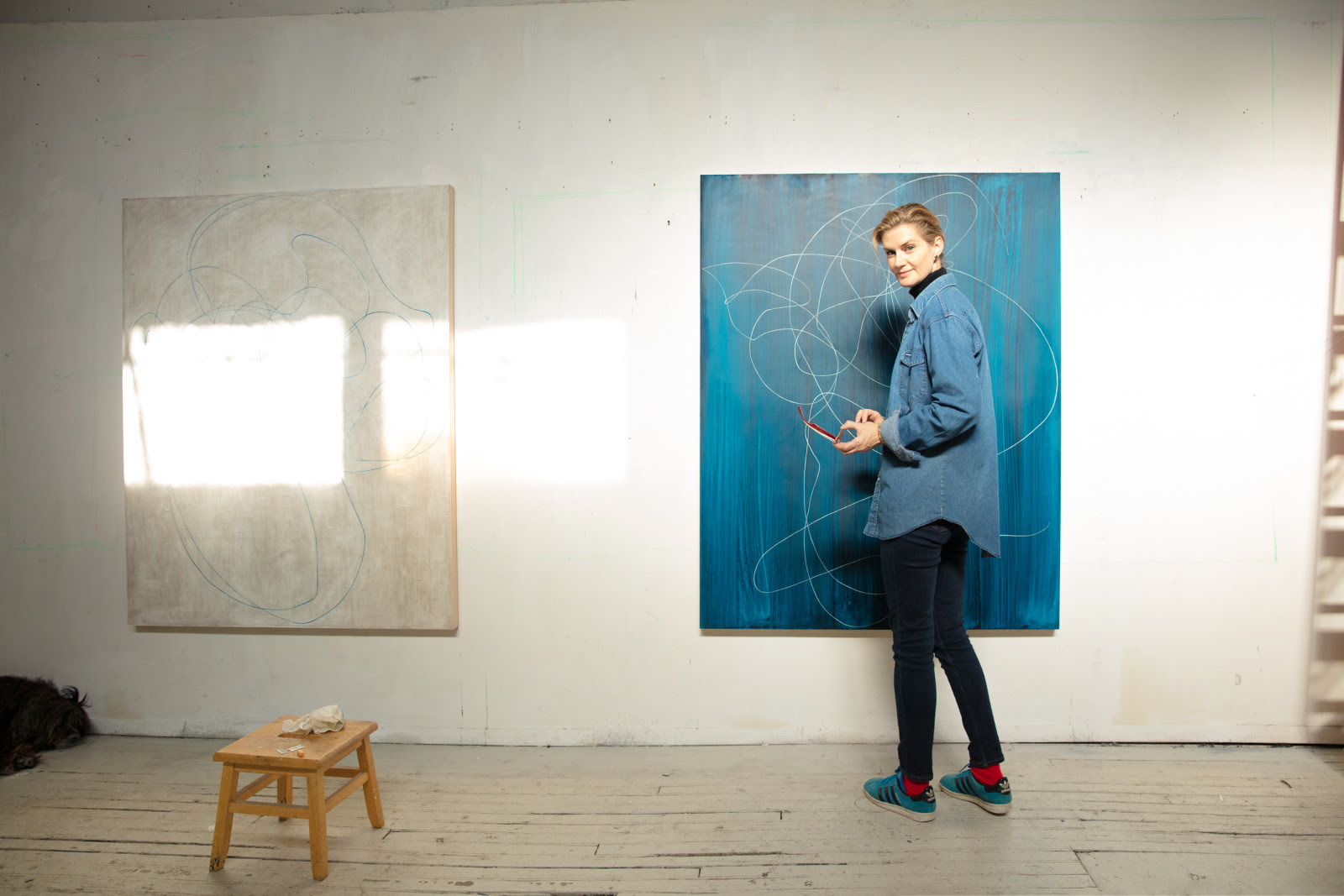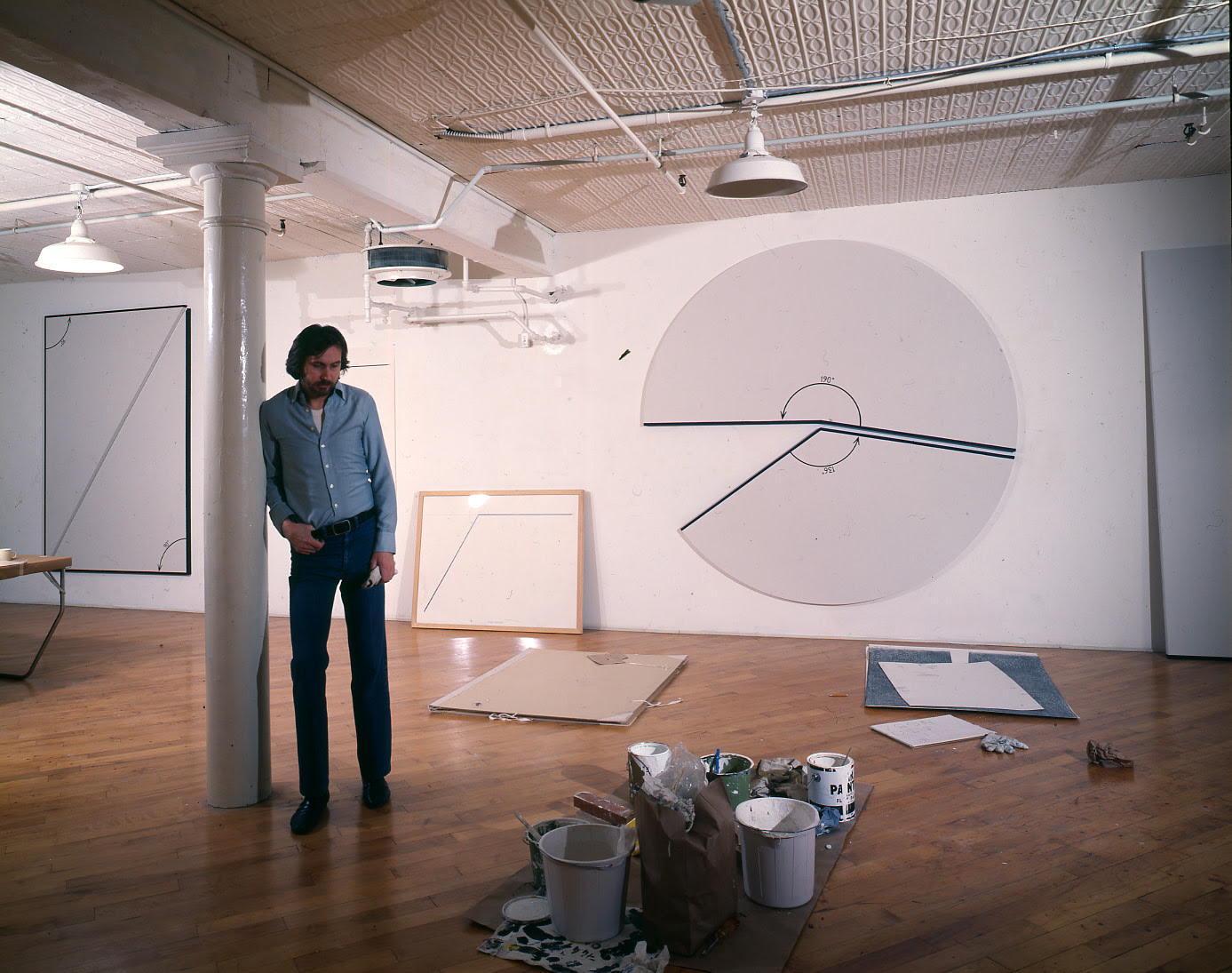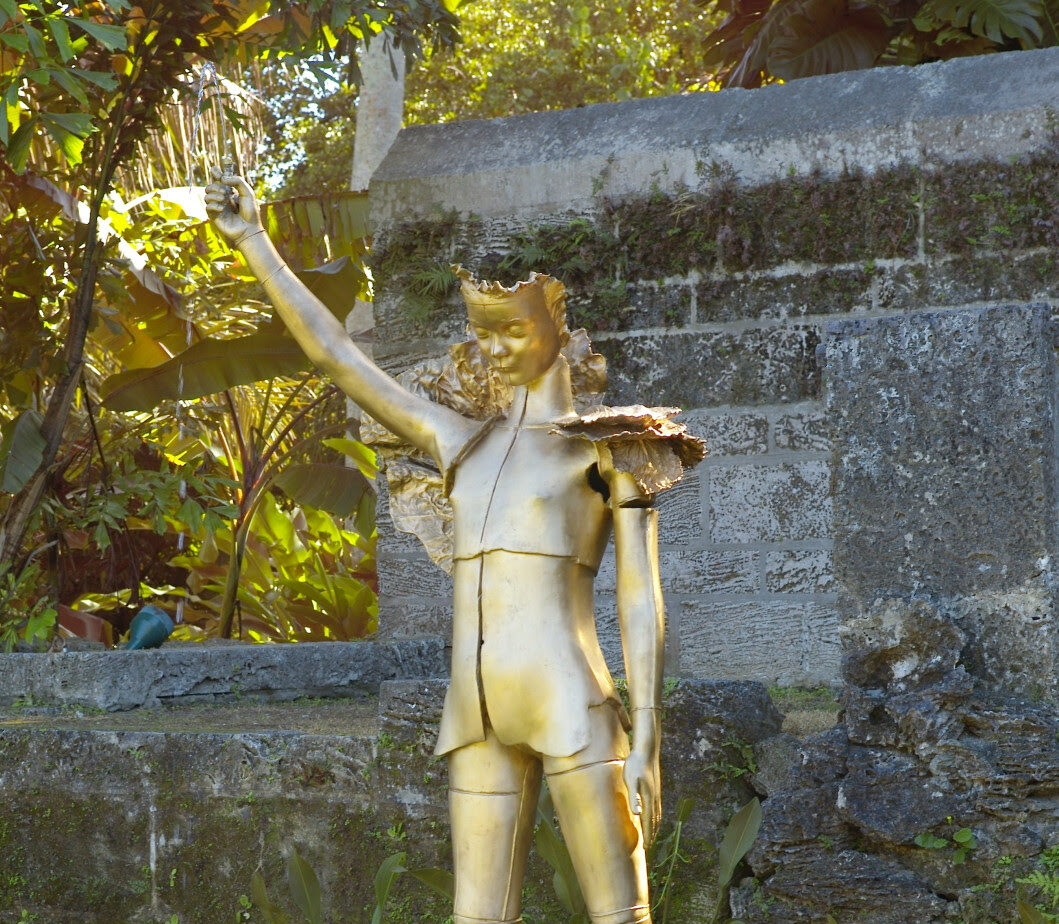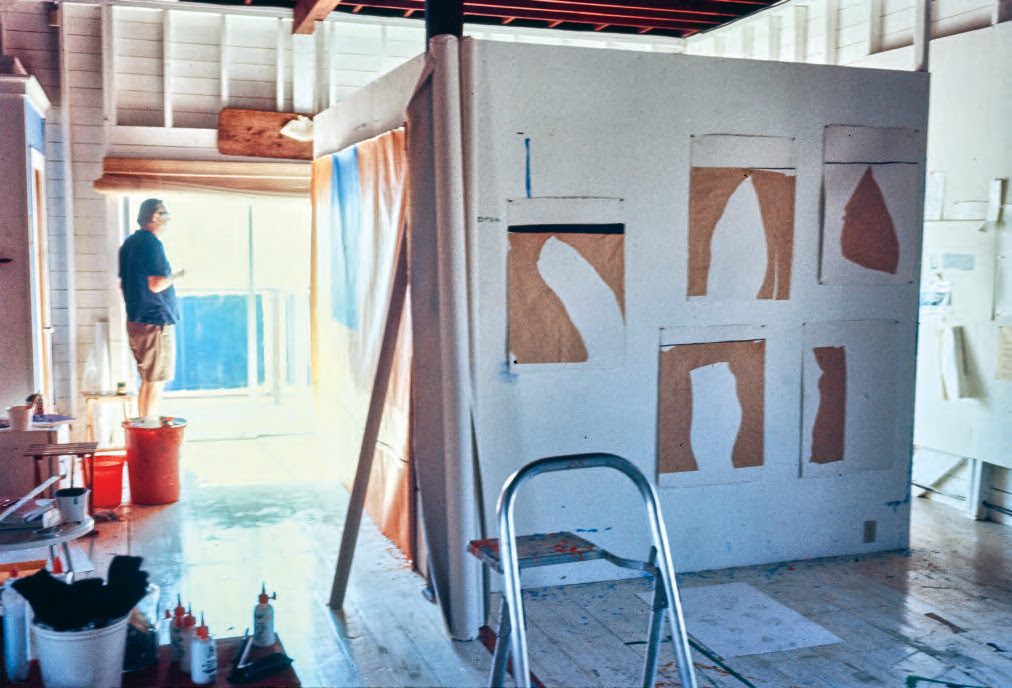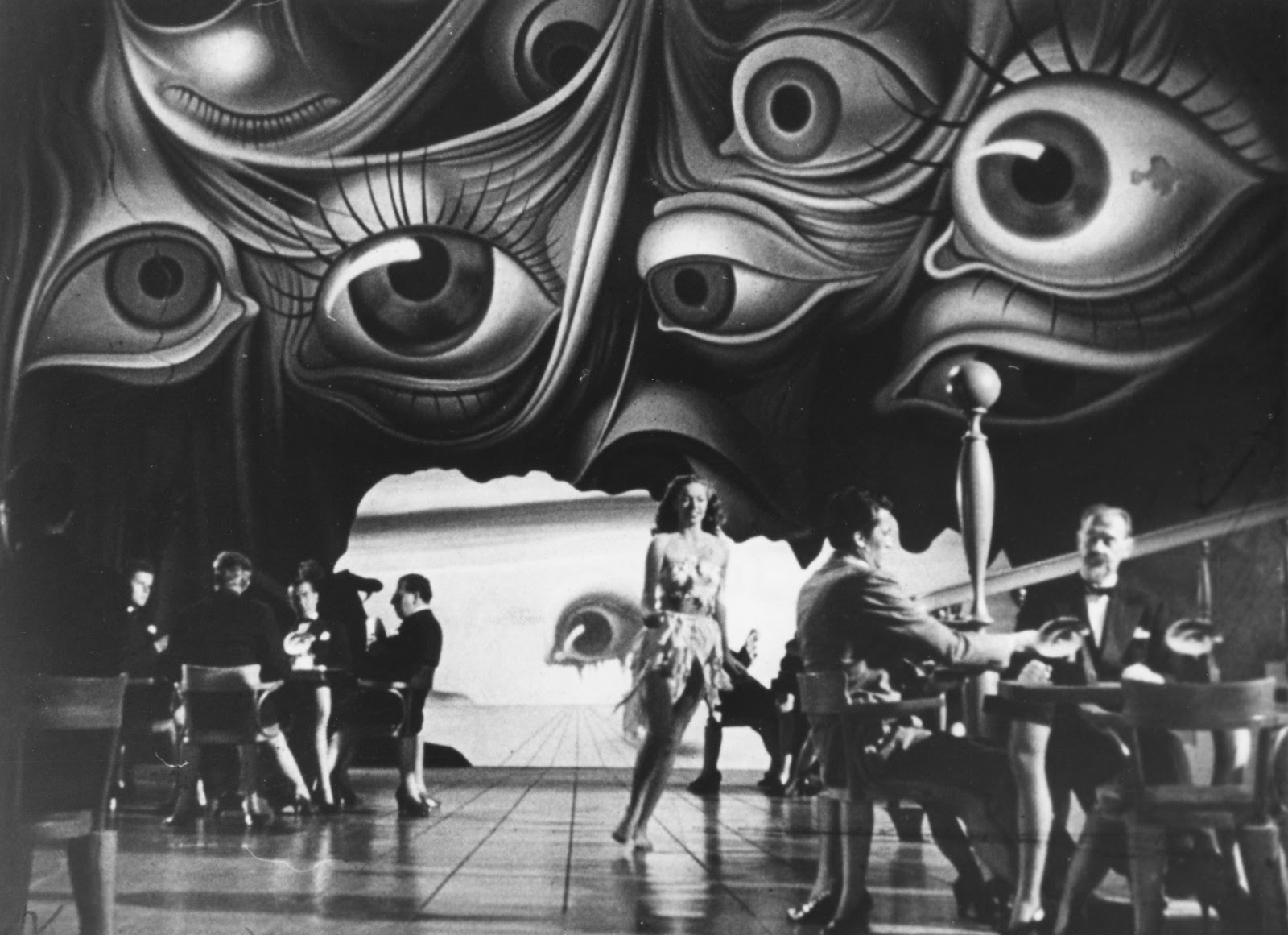On occasional Saturday mornings, Kasmin shares essays and interviews that expand critically on the work and practice of gallery artists. The below essay on Matvey Levenstein (b. 1960) by Jason Rosenfeld was commissioned on the occasion of Levenstein's second solo exhibition with Kasmin, on view September 9—October 9, 2021. Explore the works in our online viewing room.
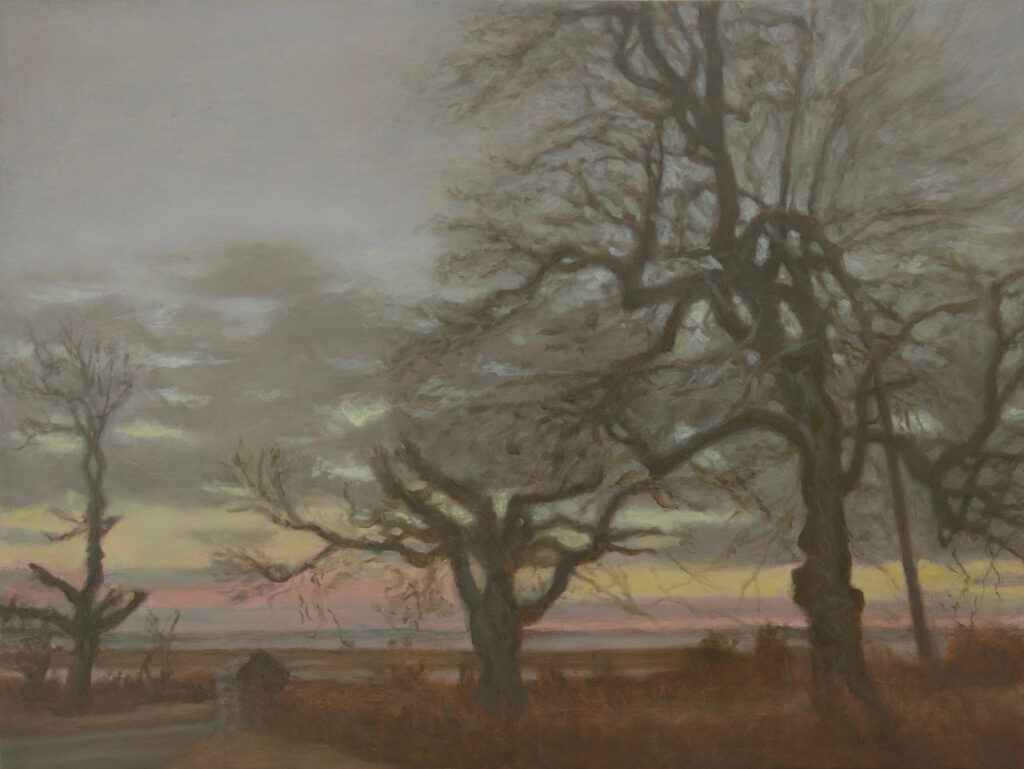
In Italy, in the Cinquecento, some artists employed a mode of coloring called unione. The goal was to “achieve tonal unity by equalizing the range of value and intensity of pigments.” [1] Many sixteenth-century artists rejected Michelangelo’s innovative cangiantismo, the juxtaposition of strident and contrasting colors as seen in his Sistine Chapel ceiling and then taken up by Mannerist artists such as Pontormo and Rosso and Bronzino. They also denied Leonardo’s sfumato, or soft harmonizing of formal transitions through hazy or smoky effects, as well as its related approach, chiaroscuro, the system of contrasts of light and shade dependent on the addition of black or saturated colors, as in most art of the Renaissance proper beginning in the Quattrocento. As opposed to tenebrism, an extreme form of chiaroscuro Caravaggio perfected at the close of the Cinquecento, unione in the work of that artist’s chief rivals, the Carracci, traded less in the realm of theatrics and spectacle and depended more on labor in process, calculated compositions, materiality, and tonal unity in pictures that combined naturalism and Renaissance classicism.
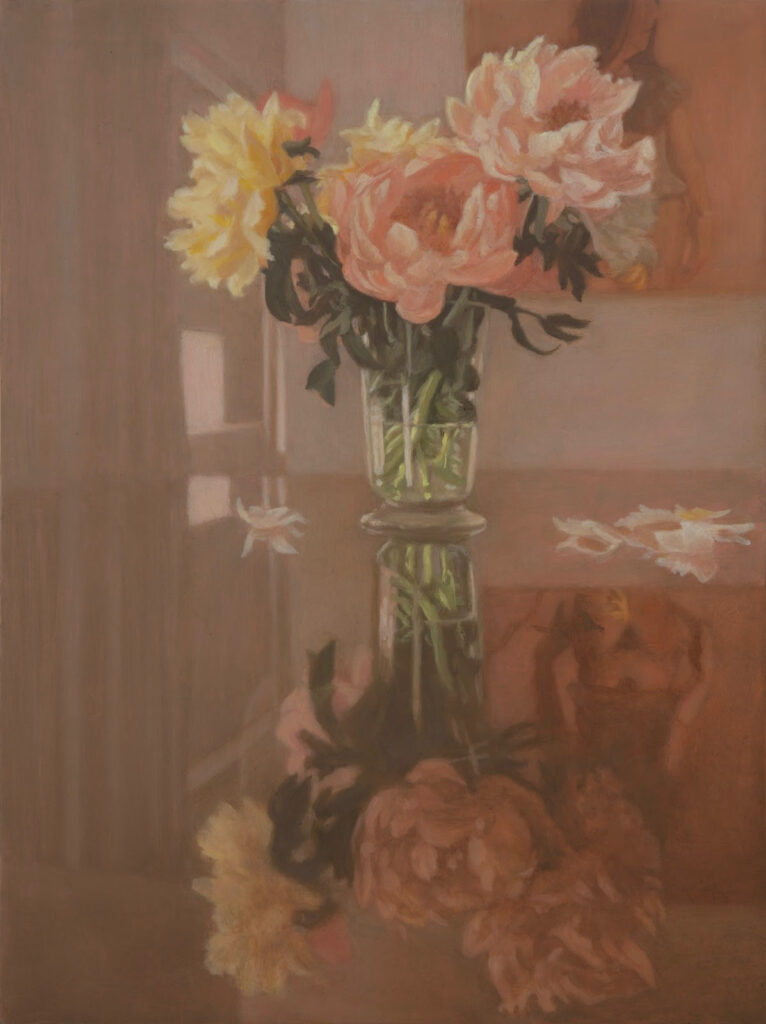
Matvey Levenstein has introduced a new unione in his recent paintings and drawings. The works in the present show, on view at Kasmin in New York, and the artist’s careful study of old masters, have led him to develop a manner that is of the present but suffused with the lessons of the past. Much of it depends on Levenstein’s process, in which he avoids working on top of white in the tradition of a transparent imprimatura, or tinted layer on top of the canvas or wood or metal support, whose use exploded in the sixteenth-century. Instead, he uses a toned, opaque ground. This influences the oil layers he then applies on top, beginning with a white, and the result is uncommon color. Levenstein works in such a way that he challenges himself to produce a range of hues from the most limited of means: the artist’s pictures bear areas that appear blue, but in this body of work he does not use blue pigments. White on top of green appears reddish. Venetian red mixed with lead white results in a bright pink hue and when you put white on top of that it looks green. I have seen it happen. It is not alchemy, but refined procedure, and the resulting pictures present a kind of tonal asceticism, something beyond the unione of Raphael or the Carracci. He uses a modified sinopia in placing a sketched design in white on the toned layer on the support. This becomes a guide for producing the final image. This neo-traditionalist approach nonetheless results in works that are bristlingly contemporary, in no way pastiches of art of the 1500s. As John Ruskin wrote in 1851 about critics who thought the works of the radical English Pre-Raphaelites simply aped van Eyck or Giotto: “They know little of ancient paintings who suppose the works of these young artists to resemble them.” [2] Levenstein’s works do not look like Raphael’s or Annibale Carracci’s at all, and they avoid the historical subject matter of the past. They pursue other genres and are suffused with the stable compositions and spirit of the Cinquecento, while aiming to emphasize the materiality of the picture, its status as an object, over its Albertian requirement to convey illusionism, to entice entry, to convey the seen as seen.
A key to this gambit is photography. Levenstein takes photos on his phone of his immediate environs, within and without his residences in New York City and the North Fork of Long Island. He selects sections from the images and then imaginatively translates their organized monocular conceptions onto his various supports. Ultimately, the source photograph is not important—I have never seen any of them—and the resulting works can vary in scale and medium. The same motif can appear small or large, in oils or Sumi inks. Then the process demands a leveling of intensity, a de-dramatizing of perception via tones that are subdued and lean heavily on earth pigments, built up from this toned ground. [3] While the artist does not work from life, en plein air, in front of the motif, he is nevertheless impacted by his continual experience of these locations in a small radius around his residence on the North Fork of Long Island or, in a more obviously personal vein, inside his New York apartment. Digital cameras, with their single lens and shutter speed and ability by turns to withstand the light of the sun or expand the light of the moon, do not represent the way we see—with motion, with binocularity, in three dimensions, with peripheral vision. For Levenstein, the appeal of photography lies is its organization of vision, its immediacy of focus, and the stillness of time that it captures.
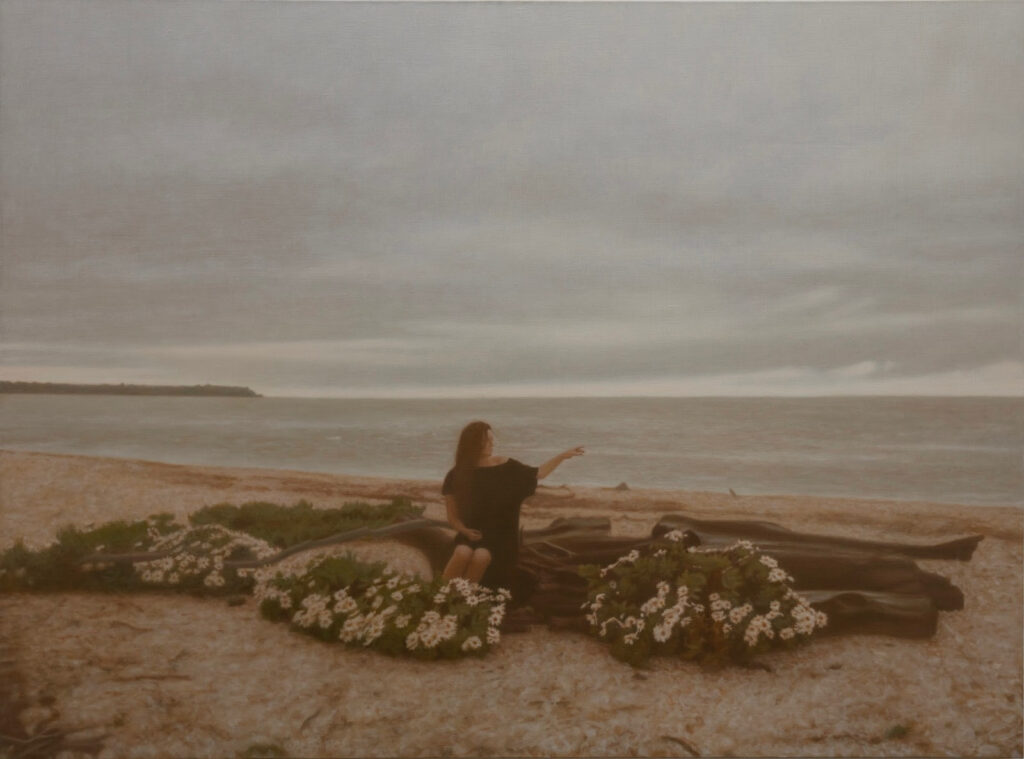
Concurrently, relatedly, perhaps contradictorily, the artist seeks the filmic in his work, attempting to convey the magical way imagery is experienced in a movie theater: with the silver screen simultaneously receiving and emanating light. The cinematic implies motion, narrative, continuity, change. How, then, to apply this to a still image, or to elicit a similar feeling? One way is via the human subject. In Levenstein’s recent work, he employs a narrow range of landscape motifs from a handful of sites in Orient, New York, and his sitters have been limited to himself and his wife, the painter Lisa Yuskavage. In Autumn, Levenstein presents Lisa on a Long Island Sound beach, seated on driftwood logs, surrounded by flowers, and gesturing roughly northeast as if directing someone’s vision. [4] The painting is of a similar height and a little narrower than Caspar David Friedrich’s Monk by the Sea (1809-10), and shares that classic example of German Romanticism’s tripartite division into sky/sea/sand, although Levenstein’s sitter is not seen from behind like Friedrich’s Rückenfigur of a monk. Taken together with related works such as the small Beach Flowers (2020) and Woman on the Beach (2017), seemingly derived from the same Levensteinian photo shoot, we see the artist moving us around his female subject, in a manner reminiscent of the work of one of the artist’s heroes, Andrei Tarkovsky, especially in his autobiographical film, Mirror (1975). Its famous second shot is of Margarita Terekhova expectantly sitting on a wood fence, seen from behind, and looking out from a site in the remote Russian woodlands over a brightened field towards a distant road. At this point we know nothing of Terekhova’s character. The camera pulls closer and then past her into the distance, without revealing her face, increasing the mystery. Levenstein’s three related pictures access this same idea and promote a similar sense of uncertainty and lack of knowledge on the part of the viewer.
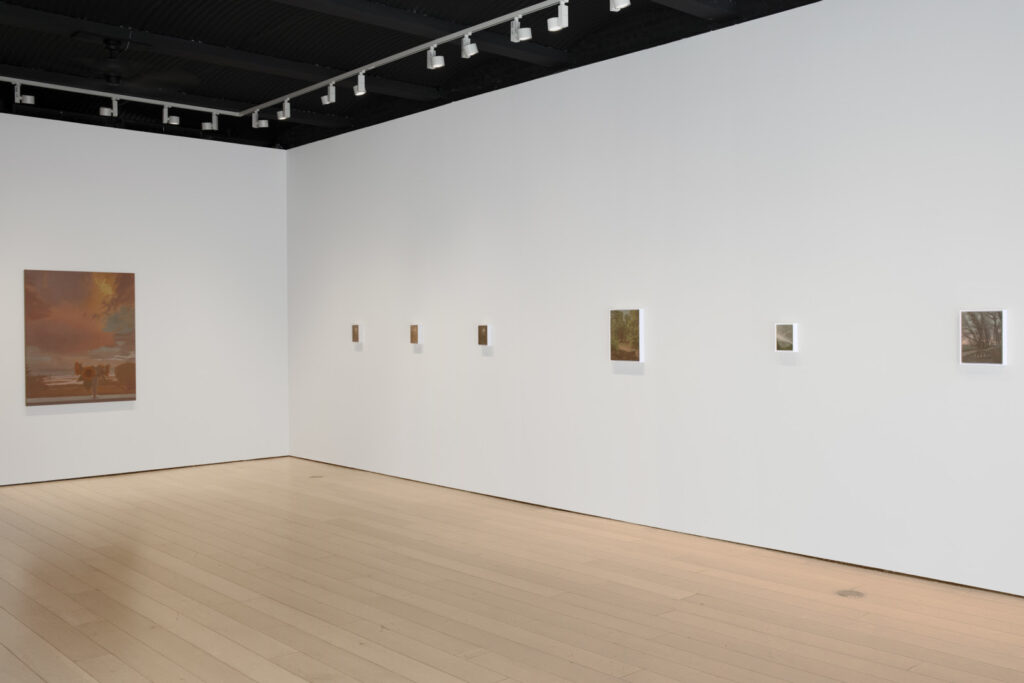
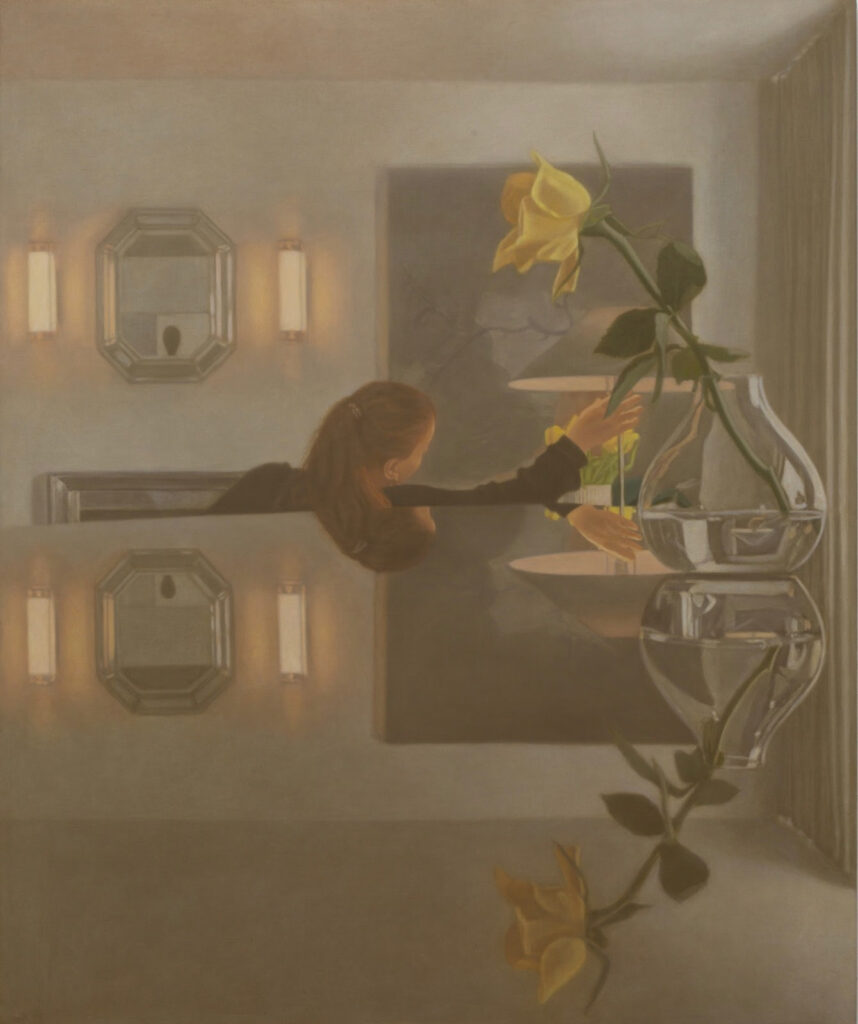
Mirror is the title of a new painting that features the same model, Levenstein’s wife, here posed not in the landscape but in the couple’s city apartment. [5] She is seen from behind across a broad expanse of reflective tabletop upon which sits a vase with a single yellow rose. She leans over and reaches out with her right hand to pull a chain to turn off a lamp behind the vase. There are multiple other light sources in the picture—two glowing vertical sconces that flank an attenuated octagonal mirror on the far wall, and gentle daylight that suffuses the scene through unseen windows behind curtains on the right. The reflection in the mirror is broken into four planes of various values of grey, from near-white at the lower right to blackish across the top. In the lighter quadrant is a dark oval shape, vertical, like a head. This is a detail from a painting that hangs across the room, ostensibly on the wall behind the position of the painter and the viewer: Levenstein’s large Self-Portrait of 2005, a colorful work featuring the artist seen from behind from the buttocks up, naked, in an interior dominated by slightly washed-out primary colors. In Mirror, only the darkened form of the back of his head is perceptible, a motif he has employed in other images of this same setting, such as Springtime Flowers and Yellow Flower (Winter), both of 2020. [6] To the right of the mirror on the back wall is Yuskavage’s Snowman of 2008, a largely grisaille scene of an apocalyptic wasteland in a tempest. Mirror, thus, seems to construct a Velázquezian interior of complicated lighting, reflection, and artistic self-reflexivity.
There has been an extreme shift in Levenstein’s work from a picture such as Still Life of 2001 to Mirror. In both, mirroring surfaces abound in their foreground, the compositions lurch ever so gently to the lower left, and the settings are domestic. But the color key and tonal unity in Mirror are wholly different from the Edward Hopperesque cangiantismo of Levenstein’s earlier work, reminiscent of that American painter’s collation of intense coloration and deep chiaroscuro. In Mirror, and the other works in the present show, a refined unione presides, creating a mood while magnifying the momentousness of simple gestures and details: a backlit hand (seen twice) gains prominence; the double reflections in the water in the vase on the table become their own worlds and impact how we perceive the represented reality. Two glints on an earring and the model’s profil perdu suggest a narrative past and present and future.
Mirror functions similarly to how Tarkovsky and his extraordinary cinematographer Georgi Rerberg concluded the film Mirror, movingly reprising that initial shot of Terekhova in the landscape with a final tracking shot in the same exact place. Time collapses and she witnesses herself as an old woman. Therein is the magic of Levenstein’s seemingly quotidian pictures: the process is the content. If that sounds formalist, well, it is. The art is a product both of experience in the home and without, via the photos and intense studio effort. The artist steers clear of the word technique. But the processes of his painting, its personal investment, are the keys to his evocations of form and meaning.
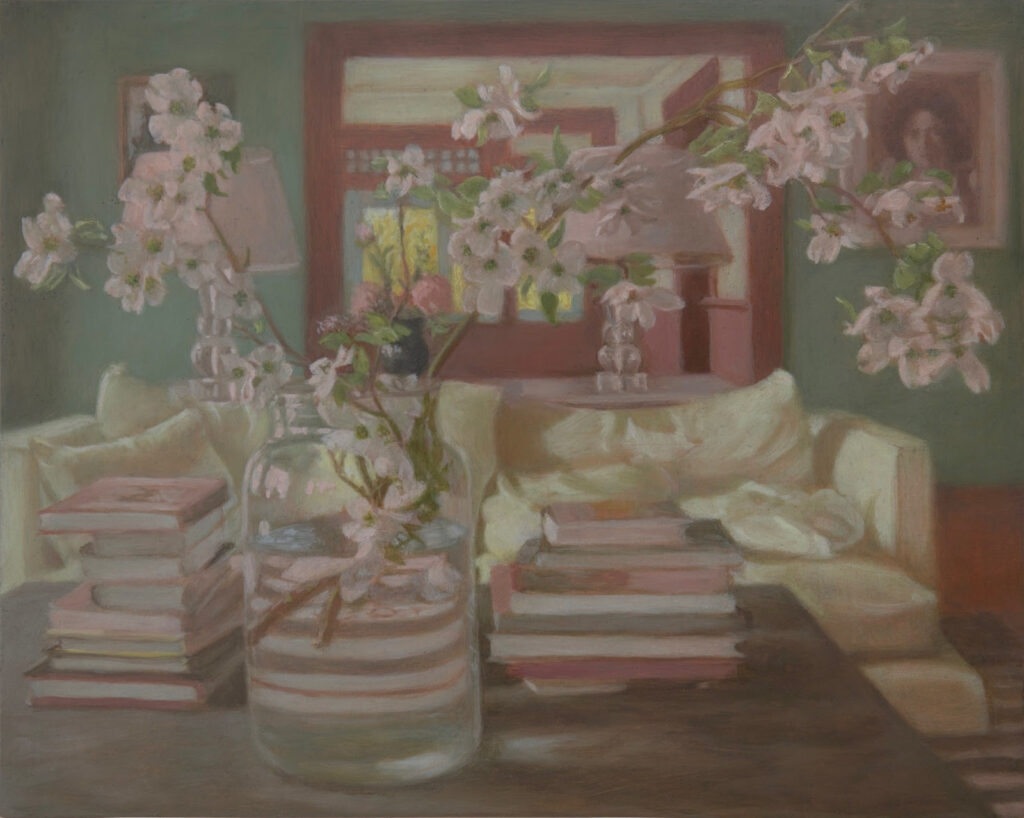
In the present exhibition Levenstein has expanded, complicated, and vivified still life painting while steadfastly and contrarily succeeding in doing something radical and advanced in this seemingly dead genre, in ever-shrinking formats. Yet, even here he pursues this idea of the filmic. These are, of course, aims of autonomous painting, as he has long maintained. [7] Levenstein has ever been concerned with making a unified space in his paintings, and as detailed above, the camera has assisted in that. Now, he has married that to a unified tone. Still life has proved an ideal genre in this pursuit. At the same time, and perhaps surprisingly, Levenstein has become intrigued by the rococo formulations of Jean-Honoré Fragonard: not the more traditional chiaroscuro and primary coloration adopted in the French painter’s Progress of Love series, now at the Frick, but the pastel tonalities applied to pinkish priming of his broader oeuvre. [8] Levenstein’s exceptional and riotously designed Orient Interior features a North Fork interior setting familiar from his pictures dominated by flowers in vases such as Interior (2018), Flowers in an Interior (2017), Lola (2017), and Little Lola (2016). Orient Interior, monumental despite being 8 by 10 inches, is a perfect example of Levenstein drawing a line between, or perhaps around, object and image. It is one of a set of small works in the show, along with Still Life with Flowers and a Painting (2021) and The Road (2021) that are on one-inch-thick wood supports with the exposed sides retaining the pinkish toned ground. At 12 by 9, or 9 by 12, or 8 by 10 inches they resemble portable altarpieces for private devotion from the Late Gothic era, such as Duccio’s Madonna and Child at the Metropolitan Museum of Art, and have the heft of sculpture. The refulgent flora in Orient Interior and its landscape format gives it the sense of being an image of nature. There is a rococo abundance of arabesques and blueish greys emerging from the pink underpainting and green derived from Turkey umber pigment blended with lead white. The preppy colors belie the seriousness and rigidity of design in this seemingly most illusionistic of his pictures: hard orthogonals present a vanishing point just above dead center, in the bullseye formed by one of the dogwood flowers on the cut branch. There are traditional foreground, middle ground, and background layers in recession. The stacked books on the metal table present various x-axes and are hardly distorted by the water in the vase. Tantalizingly, as in a Rachel Whiteread sculpture or Catherine Murphy painting, only their page sides are visible, not the spines. The seen is not so easily seen. Alberti might object. The flowers try to occlude vision, stretching across the whole panel and peppering its upper half, but they also focus vision and magnify details: a female face staring out at the upper right from an early drawing; [9] the bulbous stacked glass forms of a table lamp at right; a dark glazed pot at left with yet more flowers in it; and, in the deepest distance, the brightened forms of foliage out the windows, a yellowish escape from the green and pink and crème tonal tyranny of the interior. [10] Can a small floral still life be assertive and assaultive? This one is. Wait until Levenstein makes a large-scale version and subjects it to a more schematic approach, as in the grand and pyrotechnic Sunflowers (2021), a reworking of the small and forceful Sunset of 2019, seen in his previous Kasmin show in 2019. As the artist has said, you enter the small works more mentally and less physically than in the large works. [11]
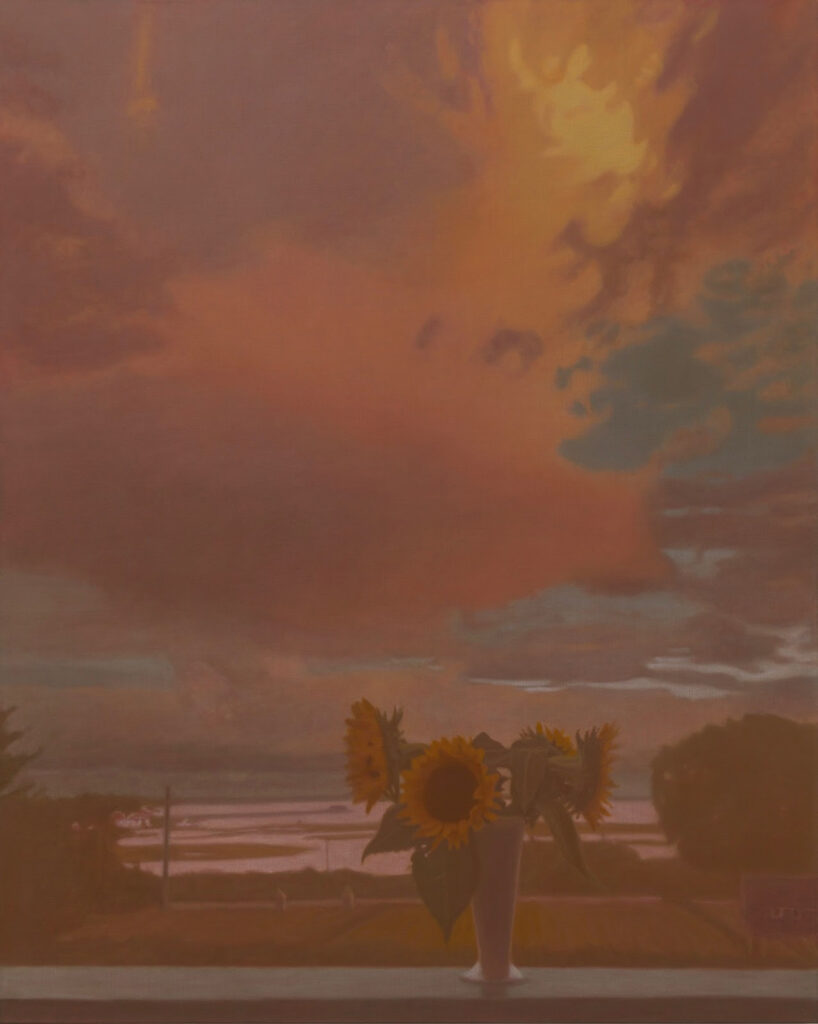
Finally, in his landscapes Levenstein subjects the preeminent genre of American nineteenth-century painting to his unione. The just about one-square foot Winter Sun (2020), painted with oil on copper at the onset of COVID-19, is a new response to his familiar environs. Turning away and upward from the direct and moving images of headstones and structures in the local Brown’s Hill Burying Ground that he had been pursuing in previous years, he looked directly to the sun. [12] Here, Levenstein worked from a pinkish brown ground and then simply added white to the picture to make the forms and create tonal variance. The filmic lingers here, as well, in a kind of dedicated vision and focus, drawing on nature to produce mood, working in what one could see either as a still or a long take, allowing the form to dissolve in suffusing light. He has returned to the graveyard in Deer in Pilgrims’ Cemetery, where a buck magically appears amidst the distant marker stones. The customary staring contest ensues, that pregnant sequence when the deer waits for you to move, then suddenly bounds into the brush. It is mystical moment of both connectivity and isolation. Suddenly, the fantastic appears amidst the mundane. Deer in Pilgrims’ Cemetery combines the elegiac Romanticism of John Constable’s Cenotaph to the Memory of Sir Joshua Reynolds (1833-6) with the somewhat artificially refulgent foliage of Poussin, all under Levenstein’s tonal unione umbrella. Things seen and not seen.
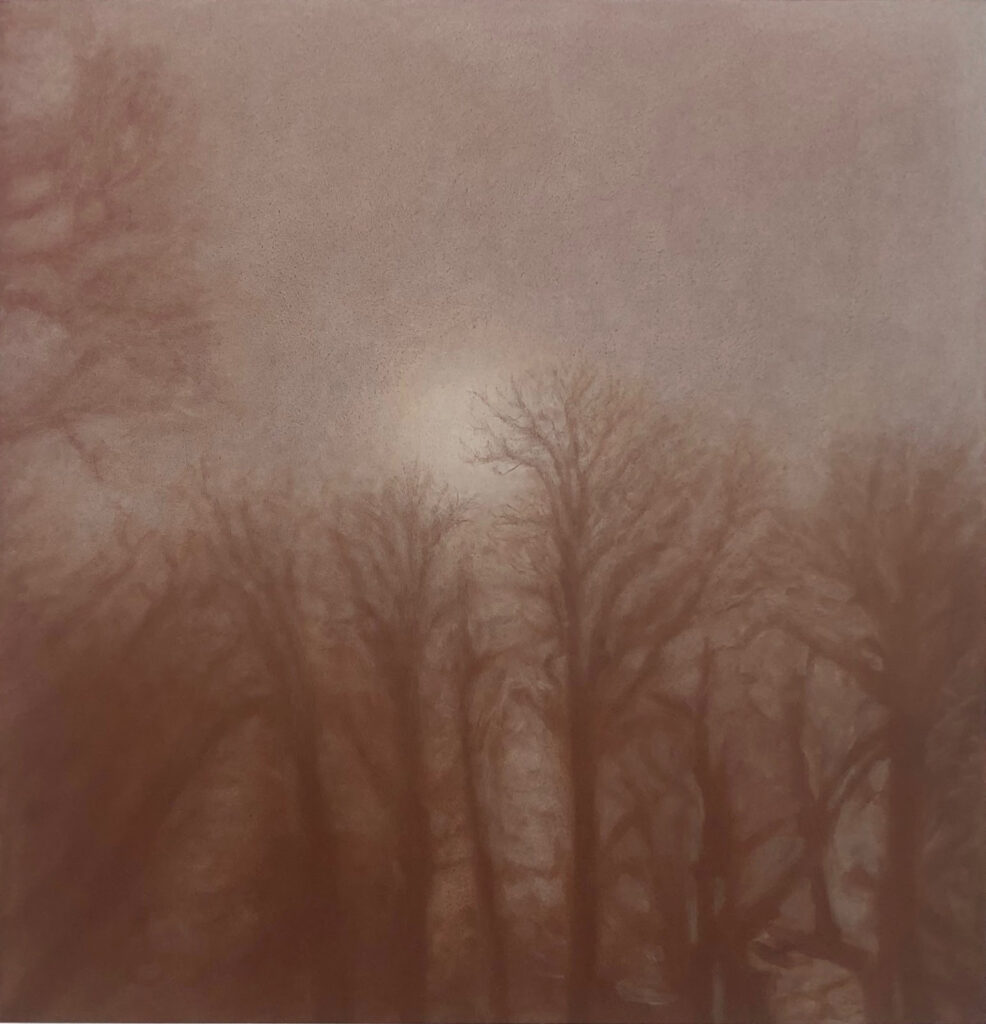
Jason Rosenfeld Ph.D., is Distinguished Chair and Professor of Art History at Marymount Manhattan College. He was co-curator of the exhibitions John Everett Millais (Tate Britain, Van Gogh Museum), Pre-Raphaelites: Victorian Avant-Garde (Tate Britain and the National Gallery of Art, Washington, D.C.), and River Crossings (Olana and Cedar Grove, Hudson and Catskill, New York). He is a Senior Writer and Editor-at-Large for the Brooklyn Rail.
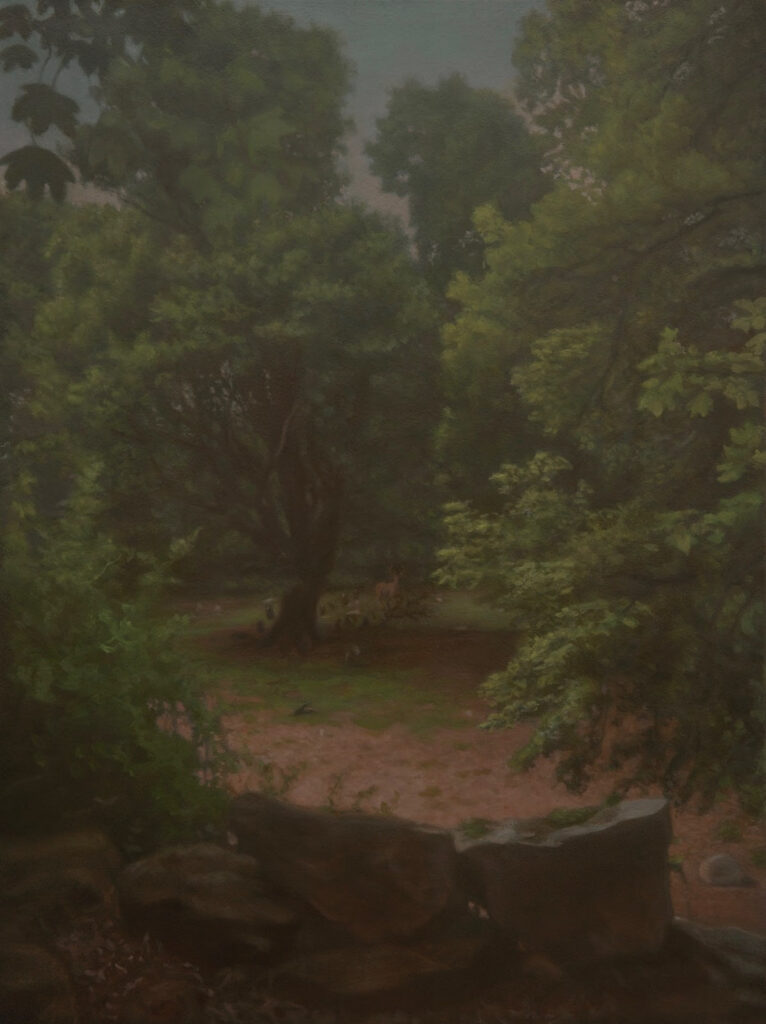
ENDNOTES
[1] Marcia B. Hall, The Power of Color: Five Centuries of European Painting (New Haven and London: Yale University Press, 2019), 275. Note that unione and cangiantismo take italics, whereas the more familiar chiaroscuro, sfumato, and tenebrism have become part of the vernacular.
[2] John Ruskin, “The Pre-Raffaellites.” [sic] Letter to the Editor. London Times 20:800 (Tuesday, 13 May 1851), 8-9.
[3] See Hall’s discussion of Vermeer, p. 12.
[4] Like the old seafarer in John Everett Millais’s Boyhood of Raleigh, 1870, Tate, London.
[5] Levenstein does not consider any of these works to be portraits.
[6] And Yellow Flower (Winter) (2020).
[7] For Levenstein, a situation of autonomous painting would be “something that cuts itself off from a general social pull…[it] imposes a frame…creates a fictional life and world of its own.” See my interview with the artist on The Brooklyn Rail New Social Environment #49, May 22, 2020: https://brooklynrail.org/events/2020/05/22/matvey-levenstein-with-jason-rosenfeld/.
[8] See Hall on Fragonard, p. 13.
[9] Miss Judea, 1993, graphite on paper, 28 ¾ x 23 inches.
[10] As in the French doors in William Holman Hunt’s The Awakening Conscience, 1853, Tate, London.
[11] The Brooklyn Rail New Social Environment #49, May 22, 2020.
[12] See Jason Rosenfeld, “Matvey Levenstein,” The Brooklyn Rail, March 2019: https://brooklynrail.org/2019/03/artseen/Matvey-Levenstein.


